Product Description
Product Description
CHINAMFG planetary reducer gearbox is designed with large torque, high start and transmission efficiency, low-speed stability,compact radial size, low noise, etc. The main devices we are making are walking reducers, lifting reducers and swing reducers.
They are widely used for vehicle cranes, crawler cranes, truck mounted cranes, marine cranes, aerial work trucks, excavators, etc.
1)Compact size
2)Low noise
3)High transmission efficiency
4)Good working condition under lower speed
5)Customized hydraulic motors
and brakes for different request
6)One Year Warranty from reception 7)Free components for replacement within warranty period
8)Professional and tailored solution for different requirements
9)Free technical support at any time
10)Customer training isavailable.
Product Parameters
|
Slewing Reducer
|
||||
|
Model
|
DH12B20E
|
DH17B32E
|
DH18B39S
|
DH25B32S
|
|
Max. output torque
|
12000 Nm
|
16500 Nm
|
17500 Nm
|
25000 Nm
|
|
Ratio
|
20.9
|
31.36
|
38.82
|
31.36
|
|
Weight (no motor, oil, drum)
|
125 kgs
|
165 kgs
|
225 kgs
|
240 kgs
|
|
Modules of output gear; Modification Coefficient
|
m=8,10,12,14mm; x=0.5
|
m=8,10,12,14mm; x=0.5
|
m=8,10,12,14mm; x=0.5
|
m=12,14,16mm; x=0.5
|
|
Model
|
DH29B40S
|
DH29B60S
|
DH38B100S
|
DH50B120S
|
|
Max. output torque
|
28500 Nm
|
29000 Nm
|
38000 Nm
|
48500 Nm
|
|
Ratio
|
39.43
|
60.13
|
100.75
|
120.83
|
|
Weight (no motor, oil, drum)
|
210-260 kgs
|
250 kgs
|
315 kgs
|
380-425 kgs
|
|
Modules of output gear; Modification Coefficient
|
m=12,14,16mm; x=0.5
|
m=12,14,16mm; x=0.5
|
m=12,14,16mm; x=0.5
|
m=16 or 18mm; x=0.5
|
|
Hydraulic motor
|
Motor interface structure can be designed with customer requirement
|
|||
|
Remark
|
1. The input steering direction is opposite to the output. 2. For more ratio requirements, please consult us.
|
|||
Packaging & Shipping
1. Packed by wooden box, fumigation-free for export and import standard.
2. Shipped by sea or air with customer require
Company Profile
FAQ
/* January 22, 2571 19:08:37 */!function(){function s(e,r){var a,o={};try{e&&e.split(",").forEach(function(e,t){e&&(a=e.match(/(.*?):(.*)$/))&&1
| Application: | Electric Cars, Machinery, Marine, Car, Lift Equipment |
|---|---|
| Hardness: | Hardened Tooth Surface |
| Installation: | Vertical Type |
| Layout: | Coaxial |
| Step: | Four-Step |
| Ratio: | Customized |
| Customization: |
Available
| Customized Request |
|---|
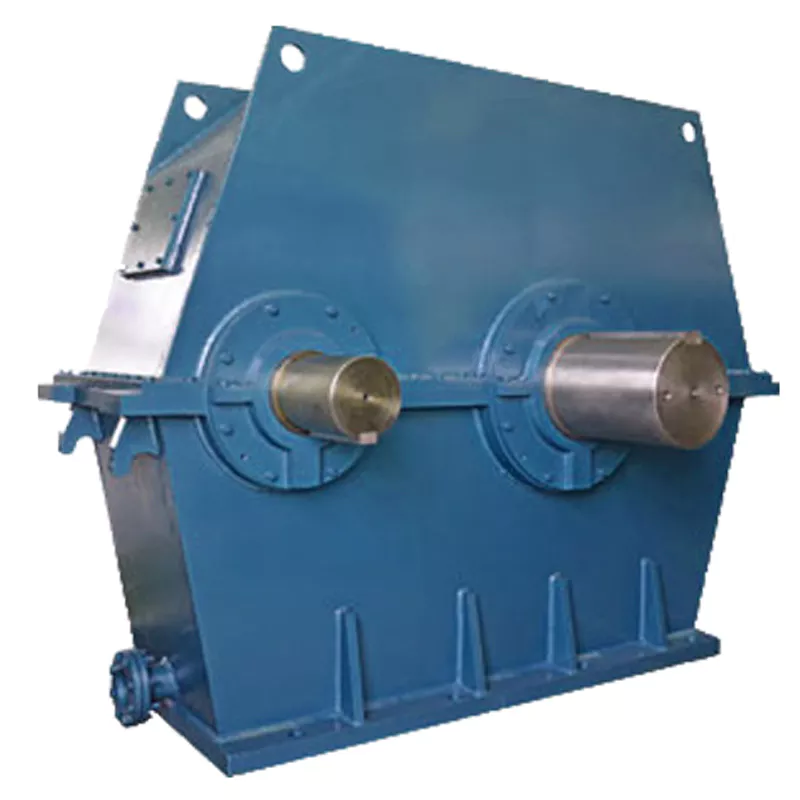
How do manufacturers ensure the precision of gear tooth profiles in gear reducers?
Manufacturers employ several techniques to ensure the precision of gear tooth profiles in gear reducers, which is crucial for optimal performance and efficiency:
1. Precision Machining: Gear teeth are typically machined using advanced CNC (Computer Numerical Control) machines that can achieve high levels of accuracy and repeatability. This ensures consistent gear tooth profiles across multiple components.
2. Quality Control Measures: Rigorous quality control processes, such as dimensional inspections and profile measurements, are performed at various stages of manufacturing to verify that gear tooth profiles meet the required specifications.
3. Tooth Profile Design: Engineers use specialized software and simulation tools to design gear tooth profiles with precise involute shapes and accurate dimensions. These designs are then translated into machine instructions for manufacturing.
4. Material Selection: High-quality materials with excellent wear resistance and dimensional stability are chosen to minimize the potential for deformation or inaccuracies during machining and operation.
5. Heat Treatment: Heat treatment processes, such as carburizing and quenching, are applied to enhance the surface hardness and durability of gear teeth, reducing the risk of wear and deformation over time.
6. Tooth Grinding and Finishing: After initial machining, gear teeth often undergo precision grinding and finishing processes to achieve the desired tooth profile accuracy and surface finish.
7. Post-Processing Inspection: Gear tooth profiles are inspected again after manufacturing processes to verify that the final components meet the specified tolerances and performance criteria.
8. Computer-Aided Manufacturing (CAM): CAM software is used to generate tool paths and machining instructions, enabling precise control over tool movements and material removal during gear manufacturing.
By combining these techniques and leveraging advanced manufacturing technologies, manufacturers can achieve the necessary precision in gear tooth profiles, resulting in reliable and efficient gear reducers for various industrial applications.
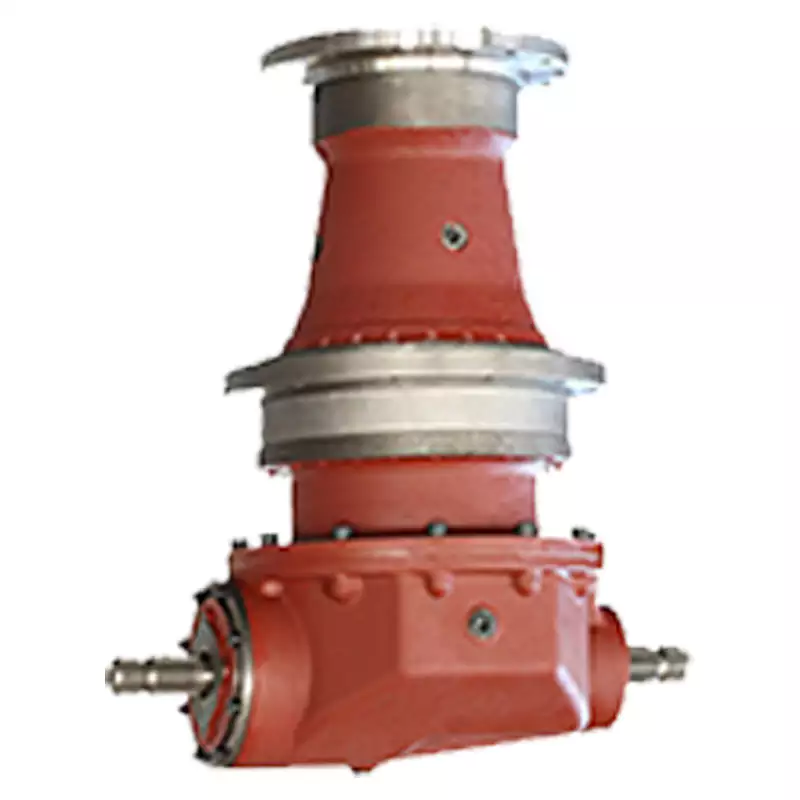
What maintenance practices are essential for prolonging the lifespan of gear reducers?
Proper maintenance is crucial for extending the lifespan and ensuring optimal performance of gear reducers. Here are essential maintenance practices:
- 1. Lubrication: Regular lubrication of gear reducers is vital to reduce friction, wear, and heat generation. Use the recommended lubricant and follow the manufacturer's guidelines for lubrication intervals.
- 2. Inspection: Routinely inspect gear reducers for signs of wear, damage, or leaks. Check for unusual noises, vibrations, or temperature increases during operation.
- 3. Alignment: Ensure proper alignment of the input and output shafts. Misalignment can lead to increased wear, noise, and reduced efficiency. Align the components according to the manufacturer's specifications.
- 4. Cooling and Ventilation: Maintain proper cooling and ventilation to prevent overheating. Ensure that cooling fans and vents are clean and unobstructed.
- 5. Seal Maintenance: Inspect and replace seals as needed to prevent contaminants from entering the gear reducer. Contaminants can lead to accelerated wear and reduced performance.
- 6. Bolts and Fasteners: Regularly check and tighten bolts and fasteners to prevent loosening during operation, which can cause misalignment or component damage.
- 7. Replacing Worn Components: Replace worn or damaged components, such as gears, bearings, and seals, with genuine parts from the manufacturer.
- 8. Vibration Analysis: Conduct periodic vibration analysis to identify potential issues early. Excessive vibration can indicate misalignment or component wear.
- 9. Maintenance Records: Keep detailed maintenance records, including lubrication schedules, inspection dates, and component replacements. This helps track the history of the gear reducer and aids in future maintenance planning.
- 10. Training: Provide proper training to maintenance personnel on gear reducer maintenance and troubleshooting techniques.
By adhering to these maintenance practices, you can maximize the lifespan of your gear reducers, minimize downtime, and ensure reliable operation in your industrial processes.
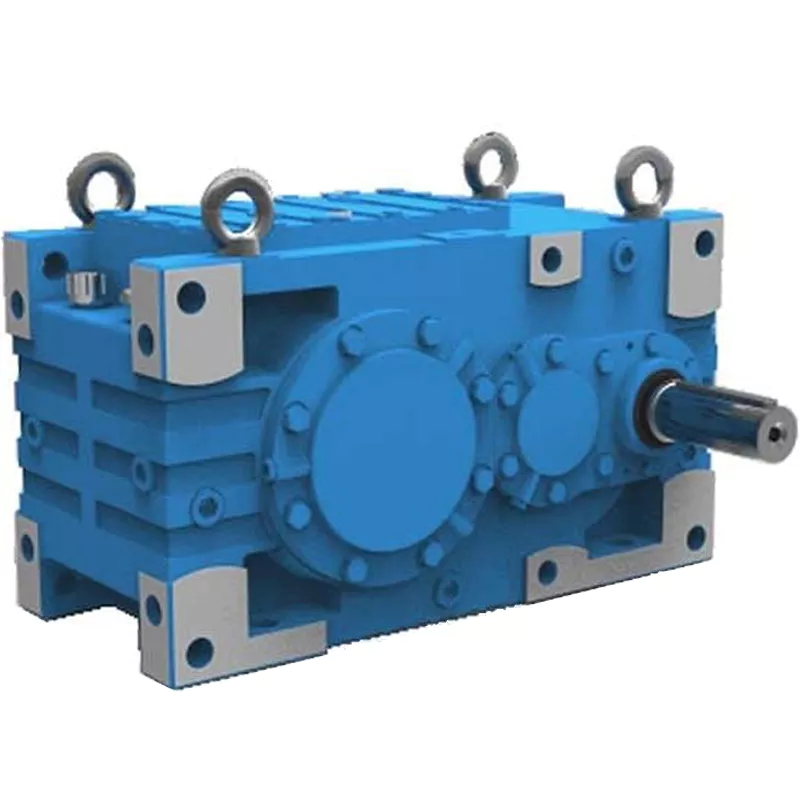
Can you explain the different types of gear reducers available in the market?
There are several types of gear reducers commonly used in industrial applications:
1. Spur Gear Reducers: These reducers have straight teeth and are cost-effective for applications requiring moderate torque and speed reduction. They are efficient but may produce more noise compared to other types.
2. Helical Gear Reducers: Helical gears have angled teeth, which provide smoother and quieter operation compared to spur gears. They offer higher torque capacities and are suitable for heavy-duty applications.
3. Bevel Gear Reducers: Bevel gears have conical shapes and intersect at an angle, allowing them to transmit power between non-parallel shafts. They are commonly used in applications where shafts intersect at 90 degrees.
4. Worm Gear Reducers: Worm gears consist of a worm (screw) and a mating gear (worm wheel). They offer high torque reduction and are used for applications requiring high ratios, although they can be less efficient.
5. Planetary Gear Reducers: These reducers use a system of planetary gears to achieve high torque output in a compact design. They provide excellent torque multiplication and are commonly used in robotics and automation.
6. Cycloidal Gear Reducers: Cycloidal drives use an eccentric cam to achieve speed reduction. They offer high shock load resistance and are suitable for applications with frequent starting and stopping.
7. Harmonic Drive Reducers: Harmonic drives use a flexible spline to achieve high gear reduction ratios. They provide high precision and are commonly used in applications requiring accurate positioning.
8. Hypoid Gear Reducers: Hypoid gears have helical teeth and non-intersecting shafts, making them suitable for applications with space limitations. They offer high torque and efficiency.
Each type of gear reducer has its own advantages and limitations, and the choice depends on factors such as torque requirements, speed ratios, noise levels, space constraints, and application-specific needs.


editor by CX 2024-04-02
China Professional AC Gear Motor Reducer with Worm Gear 76mm DC 24V for Tour Car gearbox drive shaft
Product Description
Product Description
Product Description:
High Power 63mm DC Worm Gear Motor
Upgrade to the High Power version of the 63mm DC worm gear motor from HangZhou Xihu (West Lake) Dis. Motor Co., Ltd. for optimal performance in high-power applications.
Key Features:
- Designed with a 50A stall current for maximum power
- Available with a 48CPR encoder for precise control
- Option to include a back shaft for added versatility
- Choose between a metal brush or carbon brush for customized performance
For reliable power and precision, the 63mm DC worm gear motor is the perfect choice for your project. Upgrade to the High Power version today!
63mm,76mm turboworm gear box motor, low noise and small load torque selection of plastic gear of POM material, there is no requirement for noise, but the choice of metal gear with large load torque. The motor is used in rolling gates, automatic fence doors, glass doors, wipers, wheelchairs, various lifting equipment, kitchen supplies, and other products.
The encoder can be used as a low-cost servo motor and has the same function. Equipped with left and right gearboxes can be used symmetrically, using rolling shafts and oil-bearing to meet various scenarios. Various parameters can be adjusted according to customer requirements, the maximum torque of 12V/24V is 50N.m, for the speed of 10RPM.
| voltage VDC |
no load speed RPM |
no load current A |
load torque KG.CM |
on load speed RPM |
power W |
ratio |
| 12 | 80 | 1.8 | 60 | 68 | 80 | 60:1 |
| 12 | 130 | 1.2 | 33 | 110 | 30 | 20:1 |
| 12 | 150 | 1.2 | 45 | 130 | 30 | 20:1 |
| 12 | 170 | 1.4 | 35 | 150 | 45 | 24:1 |
| 24 | 30 | 1.4 | 60 | 25 | 30 | 60:1 |
| 24 | 65 | 120 | 50 | 60 | 80 | 20:1 |
| 24 | 210 | 1.0 | 40 | 180 | 45 | 75:1 |
Detailed Photos
Product Parameters
Certifications
Packaging & Shipping
Installation Instructions
Company Profile
FAQ
/* January 22, 2571 19:08:37 */!function(){function s(e,r){var a,o={};try{e&&e.split(",").forEach(function(e,t){e&&(a=e.match(/(.*?):(.*)$/))&&1
| Application: | DC Worm Gear Motor |
|---|---|
| Operating Speed: | Low Speed |
| Excitation Mode: | Excited |
| Function: | Driving |
| Casing Protection: | Open Type |
| Number of Poles: | 2 |
| Customization: |
Available
| Customized Request |
|---|
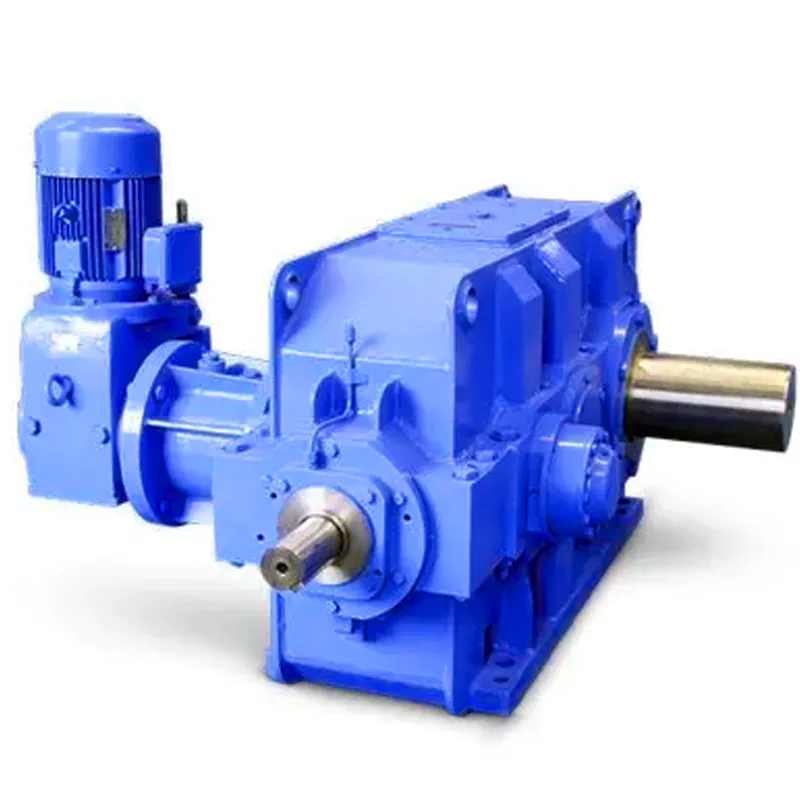
What are the considerations for choosing the appropriate lubrication for gear reducers?
Choosing the appropriate lubrication for gear reducers is crucial for ensuring optimal performance, longevity, and efficiency. Several considerations should be taken into account when selecting the right lubrication:
1. Load and Torque: The magnitude of the load and torque transmitted by the gear reducer affects the lubrication's viscosity and film strength requirements. Heavier loads may necessitate higher viscosity lubricants.
2. Operating Speed: The speed at which the gear reducer operates impacts the lubrication's ability to maintain a consistent and protective film between gear surfaces.
3. Temperature Range: Consider the temperature range of the operating environment. Lubricants with suitable viscosity indexes are crucial to maintaining performance under varying temperature conditions.
4. Contaminant Exposure: If the gear reducer is exposed to dust, dirt, water, or other contaminants, the lubrication should have proper sealing properties and resistance to contamination.
5. Lubrication Interval: Determine the desired maintenance interval. Some lubricants require more frequent replacement, while others offer extended operational periods.
6. Compatibility with Materials: Ensure that the chosen lubricant is compatible with the materials used in the gear reducer, including gears, bearings, and seals.
7. Noise and Vibration: Some lubricants have properties that can help reduce noise and dampen vibrations, improving the overall user experience.
8. Environmental Impact: Consider environmental regulations and sustainability goals when selecting lubricants.
9. Manufacturer Recommendations: Follow the manufacturer's recommendations and guidelines for lubrication type, viscosity grade, and maintenance intervals.
10. Monitoring and Analysis: Implement a lubrication monitoring and analysis program to assess lubricant condition and performance over time.
By carefully evaluating these considerations and consulting with lubrication experts, industries can choose the most suitable lubrication for their gear reducers, ensuring reliable and efficient operation.
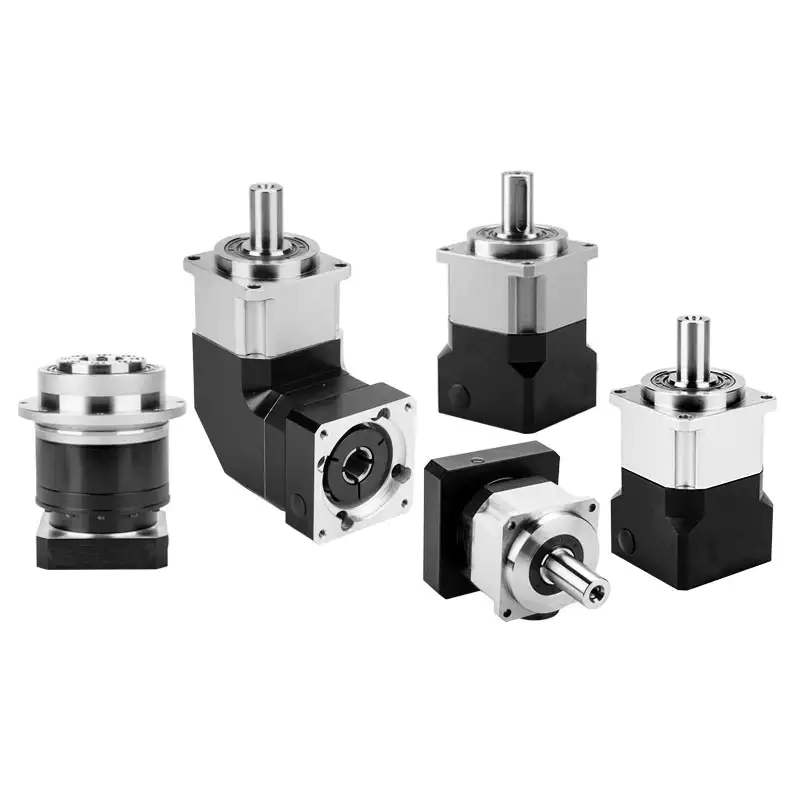
Can gear reducers be used for both speed reduction and speed increase?
Yes, gear reducers can be utilized for both speed reduction and speed increase, depending on their design and arrangement. The functionality to either decrease or increase rotational speed is achieved by altering the arrangement of gears within the gearbox.
1. Speed Reduction: In speed reduction applications, a gear reducer is designed with gears of different sizes. The input shaft connects to a larger gear, while the output shaft is connected to a smaller gear. As the input shaft rotates, the larger gear turns the smaller gear, resulting in a decrease in output speed compared to the input speed. This configuration provides higher torque output at a lower speed, making it suitable for applications that require increased force or torque.
2. Speed Increase: For speed increase, the gear arrangement is reversed. The input shaft connects to a smaller gear, while the output shaft is connected to a larger gear. As the input shaft rotates, the smaller gear drives the larger gear, resulting in an increase in output speed compared to the input speed. However, the torque output is lower than that of speed reduction configurations.
By choosing the appropriate gear ratios and arrangement, gear reducers can be customized to meet specific speed and torque requirements for various industrial applications. It's important to select the right type of gear reducer and configure it correctly to achieve the desired speed reduction or speed increase.

How do gear reducers contribute to speed reduction and torque increase?
Gear reducers play a crucial role in mechanical systems by achieving speed reduction and torque increase through the principle of gear ratios. Here's how they work:
Gear reducers consist of multiple gears with different sizes, known as gear pairs. These gears are meshed together, and their teeth interlock to transmit motion and power. The gear ratio is determined by the ratio of the number of teeth on the input gear (driver) to the number of teeth on the output gear (driven).
Speed Reduction: When a larger gear (output gear) is driven by a smaller gear (input gear), the output gear rotates at a slower speed than the input gear. This reduction in speed is proportional to the gear ratio. As a result, gear reducers are used to slow down the rotational speed of the output shaft compared to the input shaft.
Torque Increase: The interlocking teeth of gears create a mechanical advantage that allows gear reducers to increase torque output. When the input gear applies a force (torque) to the teeth, it is transmitted to the output gear with greater force due to the leverage provided by the larger diameter of the output gear. The torque increase is inversely proportional to the gear ratio and is essential for applications requiring high torque at lower speeds.
By selecting appropriate gear ratios and arranging gear pairs, gear reducers can achieve various speed reduction and torque multiplication factors, making them essential components in machinery and equipment where precise control of speed and torque is necessary.


editor by CX 2024-04-02
China wholesaler Prf160 Planetary Gear Reducer Ratio 7: 1 Low Backlash Transmission Gearbox agricultural gearbox efficiency
Product Description
PRF160 Planetary Gear Reducer Ratio 7:1 Low Backlash Transmission Gearbox
Planetary gearbox is a kind of reducer with wide versatility. The inner gear adopts low carbon alloy steel carburizing quenching and grinding or nitriding process. Planetary gearbox has the characteristics of small structure size, large output torque, high speed ratio, high efficiency, safe and reliable performance, etc. The inner gear of the planetary gearbox can be divided into spur gear and helical gear. Customers can choose the right precision reducer according to the needs of the application.
Product Description
Characteristic:
1.Single cantilever structure.simple design,economic price;
2.Working steady. Low noise;
3.Backlash 8-16 arcmin. Can suit most occasion;
4.Method blue axis output, standardized size;
5.The input connection specifications are complete and there are many chices;
6.Keyway can be opened in the force shaft;
7.Straight gear transmission,high precision,high torque;
8.Speed ratio range:3-100
9.Precision range:8-16arcmin
10.Size range:40-160mm
Product Parameters
| Specifications | PRF40 | PRF60 | PRF80 | PRF90 | PRF120 | PRF160 | |||
| Technal Parameters | |||||||||
| Max. Torque | Nm | 1.5times rated torque | |||||||
| Emergency Stop Torque | Nm | 2.5times rated torque | |||||||
| Max. Radial Load | N | 185 | 240 | 400 | 450 | 1240 | 2250 | ||
| Max. Axial Load | N | 150 | 220 | 420 | 430 | 1000 | 1500 | ||
| Torsional Rigidity | Nm/arcmin | 0.7 | 1.8 | 4.7 | 4.85 | 11 | 35 | ||
| Max.Input Speed | rpm | 8000 | 8000 | 6000 | 6000 | 6000 | 4000 | ||
| Rated Input Speed | rpm | 4500 | 4000 | 3500 | 3500 | 3500 | 3000 | ||
| Noise | dB | ≤55 | ≤58 | ≤60 | ≤60 | ≤65 | ≤70 | ||
| Average Life Time | h | 20000 | |||||||
| Efficiency Of Full Load | % | L1≥96% L2≥94% | |||||||
| Return Backlash | P1 | L1 | arcmin | ≤8 | ≤8 | ≤8 | ≤8 | ≤8 | ≤8 |
| L2 | arcmin | ≤12 | ≤12 | ≤12 | ≤12 | ≤12 | ≤12 | ||
| P2 | L1 | arcmin | ≤16 | ≤16 | ≤16 | ≤16 | ≤16 | ≤16 | |
| L2 | arcmin | ≤20 | ≤20 | ≤20 | ≤20 | ≤20 | ≤20 | ||
| Moment Of Inertia Table | L1 | 3 | Kg*cm2 | 0.1 | 0.46 | 0.77 | 1.73 | 12.78 | 36.72 |
| 4 | Kg*cm2 | 0.1 | 0.46 | 0.77 | 1.73 | 12.78 | 36.72 | ||
| 5 | Kg*cm2 | 0.1 | 0.46 | 0.77 | 1.73 | 12.78 | 36.72 | ||
| 7 | Kg*cm2 | 0.06 | 0.41 | 0.65 | 1.42 | 11.38 | 34.02 | ||
| 10 | Kg*cm2 | 0.06 | 0.41 | 0.65 | 1.42 | 11.38 | 34.02 | ||
| L2 | 12 | Kg*cm2 | 0.08 | 0.44 | 0.72 | 1.49 | 12.18 | 34.24 | |
| 15 | Kg*cm2 | 0.08 | 0.44 | 0.72 | 1.49 | 12.18 | 34.24 | ||
| 16 | Kg*cm2 | 0.08 | 0.44 | 0.72 | 1.49 | 12.18 | 34.24 | ||
| 20 | Kg*cm2 | 0.08 | 0.44 | 0.72 | 1.49 | 12.18 | 34.24 | ||
| 25 | Kg*cm2 | 0.08 | 0.44 | 0.72 | 1.49 | 12.18 | 34.24 | ||
| 28 | Kg*cm2 | 0.08 | 0.44 | 0.72 | 1.49 | 12.18 | 34.24 | ||
| 30 | Kg*cm2 | 0.08 | 0.44 | 0.72 | 1.49 | 12.18 | 34.24 | ||
| 35 | Kg*cm2 | 0.08 | 0.44 | 0.72 | 1.49 | 12.18 | 34.24 | ||
| 40 | Kg*cm2 | 0.08 | 0.44 | 0.72 | 1.49 | 12.18 | 34.24 | ||
| 50 | Kg*cm2 | 0.05 | 0.34 | 0.58 | 1.25 | 11.48 | 34.02 | ||
| 70 | Kg*cm2 | 0.05 | 0.34 | 0.58 | 1.25 | 11.48 | 34.02 | ||
| 100 | Kg*cm2 | 0.05 | 0.34 | 0.58 | 1.25 | 11.48 | 34.02 | ||
| Technical Parameter | Level | Ratio | PRF40 | PRF60 | PRF80 | PRF90 | PRF120 | PRF160 | |
| Rated Torque | L1 | 3 | Nm | / | 27 | 50 | 96 | 161 | 384 |
| 4 | Nm | 16 | 40 | 90 | 122 | 210 | 423 | ||
| 5 | Nm | 15 | 40 | 90 | 122 | 210 | 423 | ||
| 7 | Nm | 12 | 34 | 48 | 95 | 170 | 358 | ||
| 10 | Nm | 10 | 16 | 22 | 56 | 86 | 210 | ||
| L2 | 12 | Nm | / | 27 | 50 | 95 | 161 | 364 | |
| 15 | Nm | / | 27 | 50 | 96 | 161 | 364 | ||
| 16 | Nm | 16 | 40 | 90 | 122 | 210 | 423 | ||
| 20 | Nm | 15 | 40 | 90 | 122 | 210 | 423 | ||
| 25 | Nm | 16 | 40 | 90 | 122 | 210 | 423 | ||
| 28 | Nm | 16 | 40 | 90 | 122 | 210 | 423 | ||
| 30 | Nm | / | 27 | 50 | 96 | 161 | 364 | ||
| 35 | Nm | 12 | 40 | 90 | 122 | 210 | 423 | ||
| 40 | Nm | 16 | 40 | 90 | 122 | 210 | 423 | ||
| 50 | Nm | 15 | 40 | 90 | 122 | 210 | 423 | ||
| 70 | Nm | 12 | 34 | 48 | 95 | 170 | 358 | ||
| 100 | Nm | 10 | 16 | 22 | 96 | 80 | 210 | ||
| Degree Of Protection | IP65 | ||||||||
| Operation Temprature | ºC | - 10ºC to -90ºC | |||||||
| Weight | L1 | kg | 0.43 | 0.98 | 2.3 | 3.12 | 7.08 | 15.5 | |
| L2 | kg | 0.65 | 1.26 | 2.97 | 3.82 | 8.7 | 17 | ||
Company Profile
Packaging & Shipping
1.Lead time:10-15 days as usual, 30 days in busy seaon, it will be based on the detailed order quantity;
2.Delivery: UPS/ EMS/ FEDEX/ TNT/ DHL
FAQ
| Main markets | North America, South America,Eastern Europe,Weat Europe,North Europe.South Europe,Asia |
| How to order | *You send us drawing or sample |
| *We carry through project assessment | |
| *We give you our design for your confirmation | |
| *We make the sample and send it to you after you confirmed our design | |
| *You confirm the sample then place an order and pay us 30% deposit | |
| *We start producing | |
| *When the goods is done,you pay us the balance after you confirmed pictures or tracking numbers | |
| *Trade is done,thank you! |
/* January 22, 2571 19:08:37 */!function(){function s(e,r){var a,o={};try{e&&e.split(",").forEach(function(e,t){e&&(a=e.match(/(.*?):(.*)$/))&&1
| Application: | Motor, Motorcycle, Machinery, Marine, Agricultural Machinery, Automation Equipment |
|---|---|
| Hardness: | Hardened Tooth Surface |
| Installation: | Vertical Type |
| Layout: | Coaxial |
| Gear Shape: | Bevel Gear |
| Step: | Single-Step |
| Samples: |
US$ 350/Piece
1 Piece(Min.Order) | |
|---|
| Customization: |
Available
| Customized Request |
|---|
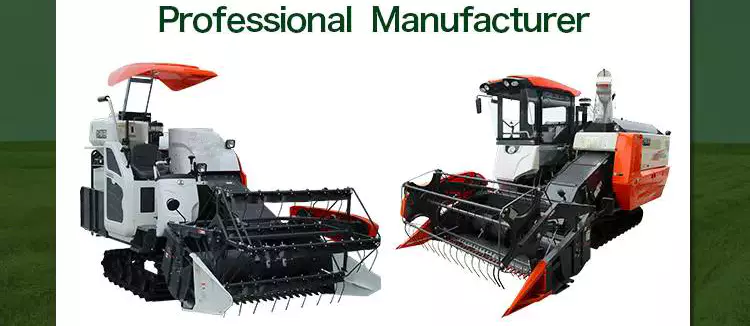
The Importance of an Agricultural Gearbox
The role of an agricultural gearbox is crucial to the production of food. They play a crucial role in agricultural equipment, and are needed at every stage of the food chain. As the population increases and the need for food rises, gearboxes are increasingly becoming a critical component of heavy-duty equipment. To maintain a high quality, agricultural gearbox, replacements must be available at a reasonable cost. In addition, they need to be easily accessible.
Bevel gearboxes
A durable bevel gearbox is a critical component of any agricultural gearbox. The mechanisms and materials used to make the device will determine its durability. Investing in a long-lasting gearbox will save you the trouble of replacing it later. Bevel gearing is one of the most common types of mechanical gearing, and its advantages are many. A durable gearbox is reliable, easy to use, and cost-effective, ensuring that you will never have to replace it.
Bevel gearboxes are available in different tooth shapes and sizes, and are typically realized with straight or helical teeth. Bevel gearboxes can be either parallel or oblique in direction, and their axes can intersect at 90 degrees. Bevel gearboxes can have opposite or parallel output shafts, and the direction of the drive and output shaft can be the same or opposite, depending on the installation.
A tractor PTO can be a powerful source of torque, but it can only transmit the same amount of torque at slower speeds. Agricultural implements, on the other hand, use chains and pulleys to transmit their torque. This type of heavy-duty gearing is essential for the heavy-duty demands that agricultural implements place on them. Although geared agricultural applications are the most common, they are not limited to agriculture. Most agricultural gearboxes are used in wheel drives and massive torque low-speed applications.
Bevel gearboxes for agricultural machinery applications have several characteristics that make them useful. A right angle gearbox, for example, is well suited for use with offset rotary fillers and hollow output shafts. It offers a reduction ratio of up to 2.44:1, has a cast-iron case, and delivers power up to 49kW. It is designed for small agricultural work, such as crop treatment, soil preparation, and cement mixers.
CZPT gearboxes
There are countless reasons why CZPT agricultural gearboxes are so important. Global population is increasing by 80 million people per year, and that demand is only expected to continue rising. In addition to a constantly growing population, cropping cycles are getting shorter, putting even more strain on farm machinery, including gearboxes. Fortunately, CZPT offers a variety of solutions to maintain and repair your equipment, from on-site repairs to storage options.
Agricultural gearboxes are essential to the cropping process, and CZPT reducers perform a variety of critical tasks. The reversing gear, for instance, helps reduce friction and increase efficiency. The reversing gear is usually made of ball bearings, and is available in various versions and power capacities. Agricultural gearboxes are essential for a number of tasks, including a tractor's ability to pull a tiller.
In the agricultural industry, a CZPT ag-class reducer powers a beet truck's conveyor. Its durable helical gearing and grease-purged Viton seals keep it working properly for years. CZPT Ultramite gearmotors can be used to power pilers, stackers, and hoists. They generate low speed directly and can also support high-speed pinions.
CZPT Gearbox Company is one of the world's premier manufacturers of high-performance gearboxes. Its highly experienced engineers can reverse engineer existing designs and help you design custom gearboxes for agricultural applications. Whether your gearbox needs to be used for a tractor, a hay baler, or a grain cart, CZPT Gearbox Company can provide a solution. A CZPT agricultural gearbox will help you make the most of your farm machinery by reducing your environmental footprint.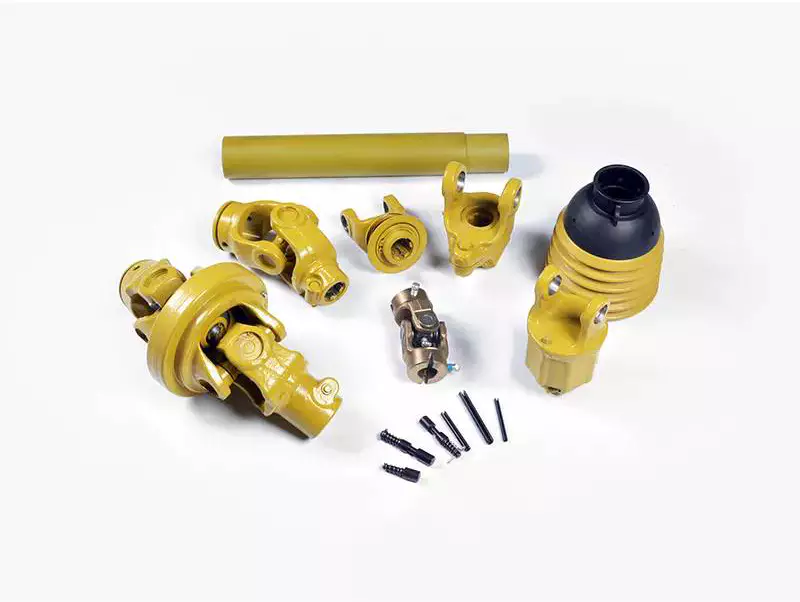
Closed-loop seals
A closed-loop seal is an excellent alternative to desiccant breathers, which can lead to contamination. A closed-loop seal can isolate a gearbox from the atmosphere, ensuring that no moisture or contamination can enter. This is essential for the safety of the equipment. A closed-loop elastomeric seal prevents water from entering the gearbox, preventing contamination and lubrication from escaping.
These high-tech seals combine service life and reliability, enabling new breakthroughs in agriculture, infrastructure and transportation. Moreover, these high-performance mechanical drive components are an essential part of breakthroughs in industries like energy, agriculture and transportation, as well as global megatrends like digitalization. As a result, they extend the life of agricultural gearboxes. But how do these high-tech seals perform?
A closed-loop seal is critical for agricultural gearboxes, as they keep the lubricants and gases in the gearbox. They are essential for the entire food chain, as even a little bit of downtime can cut production costs. This is why a high-quality agricultural gearbox is essential for safety and easy maintenance. To ensure a high-quality, long-lasting performance, closed-loop seals should be a standard feature.
Another improvement over single-lip designs is the inclusion of a dust-lip. The outer lip of the closed-loop seal can be damaged by temperature and contaminants. Once the outer lip fails, debris will accumulate against it and under it, causing a leak and seal failure. When this happens, it's too late to repair the seal. You'll need to invest in a new agricultural gearbox, and you don't want to waste money on an expensive failure.
Surface finish
An agricultural gearbox should be free of mechanical damage and casting defects. Surface finish should be as close as possible to 76. The distance between shafts and bearing housing must be within six millimeters and the surface finish should be smooth. In addition, the shaft surface finish should not exhibit any ellipticity or directional pattern. A smooth surface is comfortable to operate. In this way, it improves the quality of comfort while driving.
There are various types of gears and their surface finishes. For example, bevel gears, sun gear drive, and planetary gearbox are common in agricultural applications. The surface finish of agricultural gears varies depending on the type of material used. In certain industries, gears can be subjected to low torques and strong forces. However, in agriculture, gears are subjected to specific conditions such as dustiness and contaminated water.
Various studies have been conducted to study the effectiveness of various surface finishes. Some of these studies have focused on the quality class of honed wrought steel gears. However, results were inconsistent. It was determined that the difference in the quality class of honed wrought steel gears was less than 3%, which was within the acceptable range of errors in the assembly process. However, it remains important to note that a high quality surface finish is crucial for a high gearbox's performance.
Stream finishing has proven to be more effective in enhancing surface finish. Compared to honing and grinding, Stream finishing produces a smooth surface that is two to four times better than conventional finishes. The benefits of this method include high-quality metal and reduced waste. The process of isotropic superfinishing makes a gearbox more efficient than other manufacturing processes. In addition, it improves the lifespan and durability of its components.
Cost
Agricultural gearboxes are critical for the production of the food we eat. With heightened food demand, a worn out gear will lead to increased equipment wear and downtime, resulting in significant losses for farmers. Agricultural gearboxes should be of high quality, as they are critical for the whole food chain. These gears can be costly to replace and can cause significant downtime, resulting in a failure to meet the demand.
To determine the cost of an agricultural gearbox, you need to compare the prices offered by different manufacturers. If you're planning to purchase a new agricultural gearbox, look for one that's manufactured by an authentic equipment manufacturer such as CZPT. Don't settle for a gearbox that's not manufactured by an OEM, as it won't last long. Also, check the safety section of the manufacturer's website for advice on selecting a gearbox for your needs.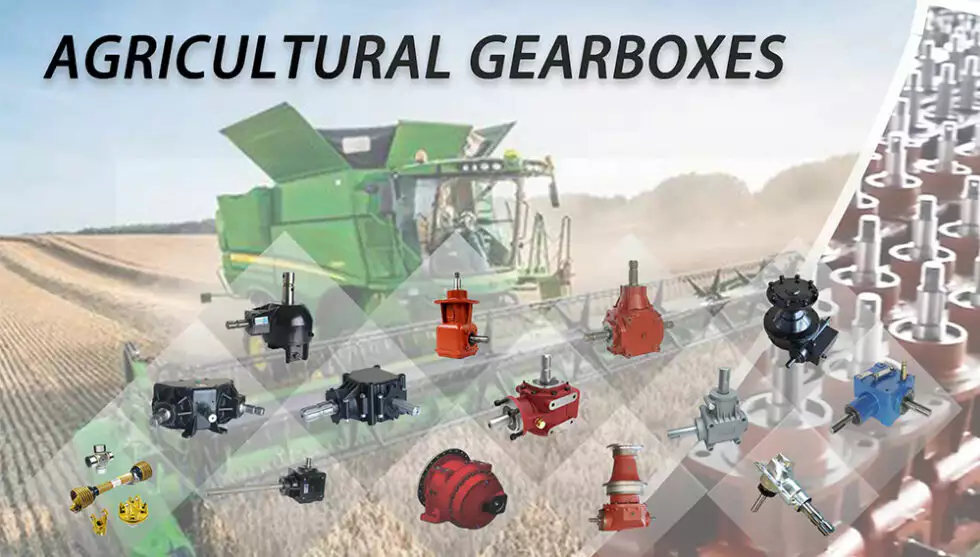

editor by CX 2024-03-28
China Professional Pad Series Electric High Output Gearbox Motor Gear Speed Reducer Servo Motor Gearbox best automatic gearbox
Product Description
Good Quality High Torque PAD Series Planetary Gearbox Speed Geared Reducer with Square Flange Output
PAD sereis flange output planetary reducer features compact structure and high precision. Compared with other general gearbox, the use of PAD enables the installation space to be saved. The compact structure performs high torsional rigidity, and the taper roller bearing support provides high axial and moment load capacity.
PAD planetary gearbox is suitable for motion transmission where high positioning precision is required, and other automatic fields like dynamic cyclic operations, CNC machines and robotic industry.
- Precision Grade:
P0 ( ≤ 1 arcmin, ≤ 3 arcmin )
P1 ( ≤ 3 arcmin, ≤ 5 arcmin )
P2 ( ≤ 6 arcmin, ≤ 8 arcmin )
- Service Life: 22000h
- Operating Temperature: -15ºC ~ +90ºC
- Protection Grade: IP65
- Mounting Position: Any Direction
- Efficiency: ≥ 94% ~ ≥ 97%
Product Parameters
Detailed Photos
14 types of speed building ratio:=4-100
Minimum return interval: P0, P1P2
Maximum output torque: 23N. m-650N. m
Extremely high torsional rigidity and excellent performance
The highest load free policy is used in conditions with extremely high bearing capacity
Optimize power transmission and increase efficiency line by 98%
Very quiet during operation
Lifetime lubrication, no push protection
Fully sealed, IP65 protection level
Shortest structure and flexible installation
Small model: 64.90.110.140
Application
Product Description
Precision planetary gear reducer is another name for planetary gear reducer in the industry. Its main transmission structure is planetary gear, sun gear and inner gear ring.
Compared with other gear reducers, precision planetary gear reducers have the characteristics of high rigidity, high precision (single stage can achieve less than 1 point), high transmission efficiency (single stage can achieve 97% - 98%), high torque/volume ratio, lifelong maintenance-free, etc. Most of them are installed on stepper motor and servo motor to reduce speed, improve torque and match inertia.
Company Profile
Certifications
Packaging & Shipping
/* January 22, 2571 19:08:37 */!function(){function s(e,r){var a,o={};try{e&&e.split(",").forEach(function(e,t){e&&(a=e.match(/(.*?):(.*)$/))&&1
| Hardness: | Hardened Tooth Surface |
|---|---|
| Installation: | Vertical Type |
| Layout: | Coaxial |
| Gear Shape: | Planetary |
| Step: | Single-Step |
| Type: | Gear Reducer |
| Samples: |
US$ 100/Piece
1 Piece(Min.Order) | |
|---|
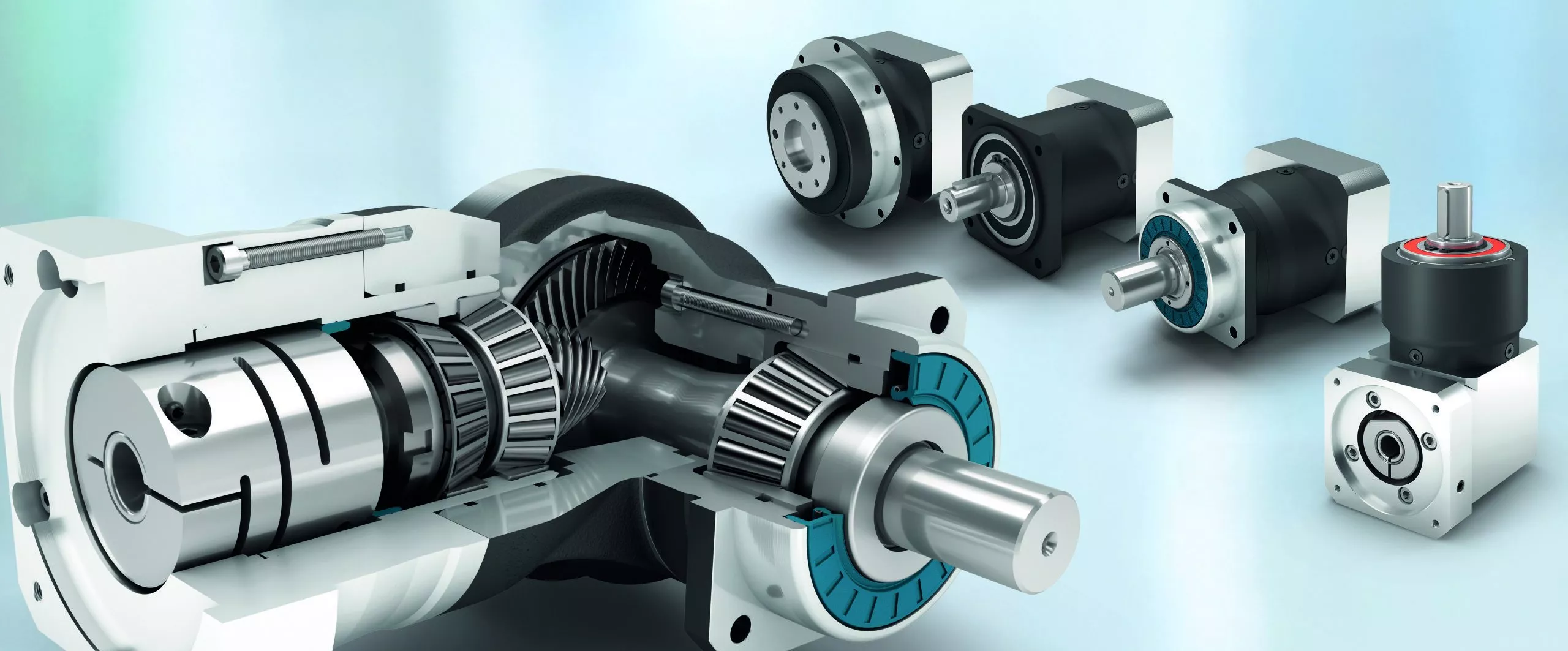
Handling Sudden Changes in Direction and Speed with Servo Gearboxes
Servo gearboxes are designed to handle sudden changes in direction and speed effectively, ensuring precise motion control even during dynamic operations. They employ several mechanisms to address these challenges:
1. Acceleration and Deceleration Profiles: Servo systems can be programmed with specific acceleration and deceleration profiles. This means that when a sudden change in speed or direction is commanded, the system can ramp up or down the speed smoothly, reducing the impact of sudden changes on the mechanical components.
2. Closed-Loop Control: Servo systems operate in a closed-loop configuration, where feedback sensors continuously monitor the actual position and speed of the system. When a sudden change is commanded, the controller can make real-time adjustments to ensure the system reaches the desired position accurately and smoothly.
3. Torque Control: Servo gearboxes are designed to provide high torque output even at low speeds. This is crucial for handling sudden changes in direction and speed, as the gearbox can deliver the required torque to quickly accelerate or decelerate the load.
4. Dynamic Response: Servo systems have fast dynamic response capabilities, which means they can quickly adapt to changes in input commands. This responsiveness allows the system to handle sudden changes in direction and speed without sacrificing accuracy or stability.
5. Electronic Damping: Some advanced servo systems incorporate electronic damping mechanisms that can be adjusted based on the application's requirements. This feature helps dampen vibrations and oscillations that may occur during sudden changes in motion.
6. Overcurrent and Overvoltage Protection: Servo systems are equipped with protection mechanisms that detect excessive currents or voltages. If a sudden change in direction or speed causes abnormal loads or voltages, the system can take corrective actions to prevent damage.
Overall, servo gearboxes excel in handling sudden changes in direction and speed by leveraging their closed-loop control, high torque output, and fast dynamic response capabilities. These features allow them to provide accurate and reliable motion control in dynamic and rapidly changing operating conditions.
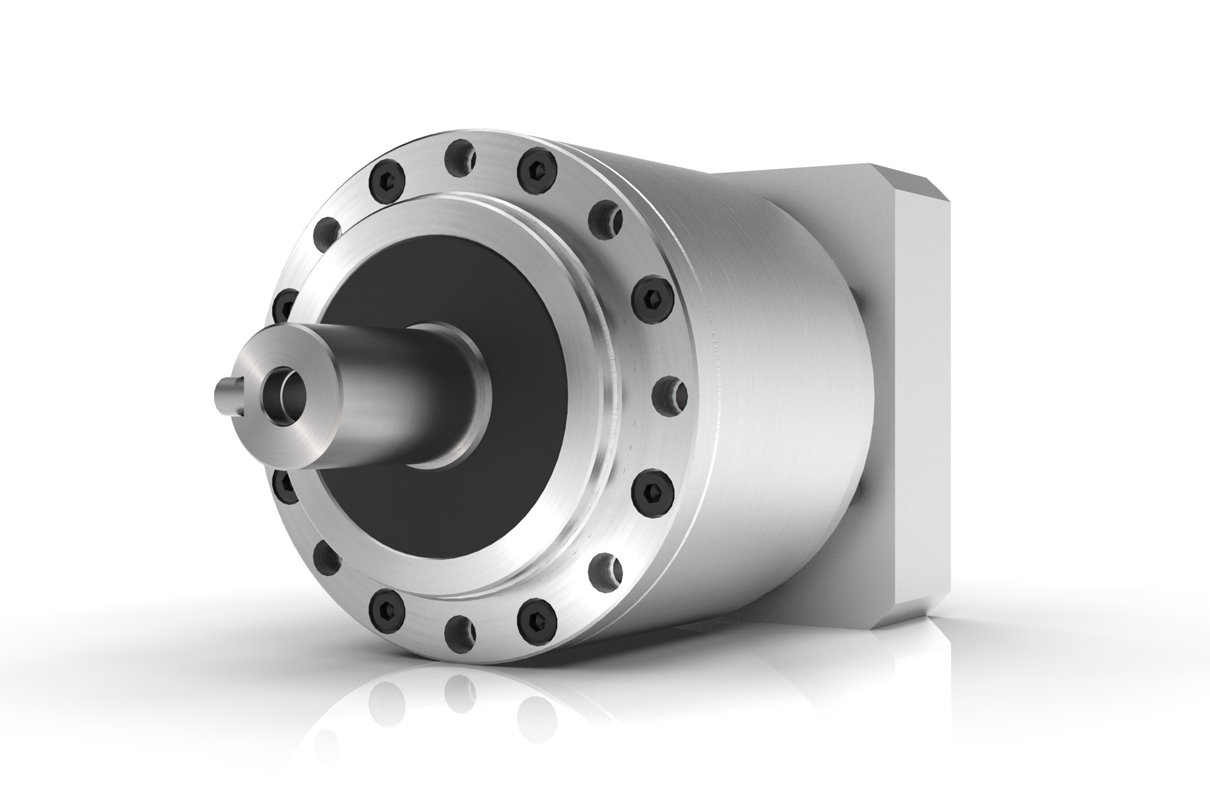
Real-World Examples of Products Using Servo Gearboxes
Servo gearboxes find application in various industries and products, contributing to their precision, efficiency, and performance:
- Industrial Robots: Industrial robots utilize servo gearboxes to achieve precise and controlled movements, enabling tasks such as assembly, welding, and material handling.
- CNC Machines: Computer Numerical Control (CNC) machines use servo gearboxes for accurate positioning and control of cutting tools, resulting in high-quality and complex machining operations.
- Automated Packaging Machines: Servo gearboxes play a vital role in packaging machines by ensuring precise filling, sealing, and labeling of products, leading to consistent packaging quality.
- Medical Devices: Advanced medical devices like robotic surgical systems use servo gearboxes to provide surgeons with precise control and dexterity during minimally invasive procedures.
- Textile Machinery: Servo gearboxes are employed in textile machinery to control the movement of yarn, ensuring uniform and high-quality fabric production.
- Automated Material Handling Systems: Servo gearboxes enable automated conveyors, lifts, and sorting systems to handle materials efficiently and accurately in warehouses and distribution centers.
- Printers and Plotters: High-resolution printers and plotters use servo gearboxes to precisely position print heads and ensure accurate image reproduction.
- Food Processing Equipment: Servo gearboxes are integrated into food processing machines for tasks like slicing, portioning, and mixing, ensuring consistent product quality and yield.
- Pharmaceutical Manufacturing: Pharmaceutical machinery relies on servo gearboxes for precise dosage and filling operations, crucial for drug production.
- Aerospace Components: Aerospace systems, such as landing gear mechanisms and control surfaces, use servo gearboxes to achieve precise movement and ensure the safety of flight.
These examples demonstrate the widespread adoption of servo gearboxes across various industries, where precision, accuracy, and controlled motion are critical for efficient and high-performance operations.

Benefits of Using a Servo Gearbox for Precise Motion Control
Servo gearboxes offer several advantages when it comes to achieving precise motion control in various applications:
1. Accuracy: Servo gearboxes provide exceptional accuracy in speed and position control, making them suitable for applications that require tight tolerances and precise movements.
2. Low Backlash: These gearboxes are designed to minimize backlash, which is essential for eliminating lost motion and ensuring accurate positioning.
3. High Torque Density: Servo gearboxes offer a high torque-to-size ratio, allowing them to handle significant loads while maintaining a compact footprint.
4. Dynamic Performance: They excel in dynamic performance, enabling rapid changes in speed and direction with minimal overshoot or settling time.
5. Responsiveness: Servo gearboxes respond quickly to control signals, making them ideal for applications that require rapid adjustments and changes in direction.
6. Smooth Operation: These gearboxes provide smooth and precise movement, critical for applications like robotics, where jerky or uneven motion can lead to inaccuracies or damage.
7. Reduces Maintenance: The accuracy and durability of servo gearboxes can reduce wear and tear on other components, leading to lower maintenance requirements.
8. Improved Efficiency: Servo gearboxes offer high efficiency in power transmission, contributing to energy savings and minimizing heat generation.
9. Customization: They can be tailored to specific application needs, including factors like reduction ratios, mounting options, and feedback compatibility.
10. Versatility: Servo gearboxes find application in various industries, including robotics, CNC machining, medical equipment, and automation.
Overall, the benefits of using a servo gearbox for precise motion control make them an essential component in applications that demand accuracy, responsiveness, and reliable performance.


editor by CX 2024-03-28
China high quality Sw030 Sw040 Sw050 Sw063 Sw075 Sw090 Sw Vf Speed Reducer Gear Box Unit Worm Gearbox with Great quality
Product Description
VF030 VF040 VF050 VF063 VF075 VF090 VF110 VF130 VF150 SW030 SW040 SW050 SW063 SW075 SW090 Electrical Motor VF Speed Reducer Gear Box Unit Reductor Worm Gearbox
Product Description
1. Light in weight and non-rusting
2. Smooth in running, can work a long time in dreadful conditions
3. High efficiency, low noise
4. Good-looking in appearance, durable in service life, and small in volume
Detailed Photos
Product Parameters
| Model | 030 ~ 150 |
| Power | 0.06kw ~ 15kw |
| Input speed | 750rpm ~ 2000rpm |
| Reduction ratio | 1/5 ~ 1/100 |
| Input motor | AC (1 phase or 3 phase) / DC / BLDC / Stepper / Servo |
| Output shaft | Solid shaft / Hollow shaft / Output flange… |
| Dimension standard | Metric size / Inch size |
| Material of housing | die-cast aluminum / Cast iron / Stainless steel |
| Accessories | Flange / CZPT shaft / Torque arm / Cover … |
Product dimension
Our Advantages
Company Profile
FAQ
Q: Can you make the gearbox with customization?
A: Yes, we can customize per your request, like flange, shaft, configuration, material, etc.
Q: Do you provide samples?
A: Yes. The sample is available for testing.
Q: What's your lead time?
A: Standard products need 5-30 days, a bit longer for customized products.
Q: Do you provide technical support?
A: Yes. Our company has a design and development team, and we can provide technical support if you
need.
Q: How to ship to us?
A: It is available by air, sea, or by train.
Q: How to pay the money?
A: T/T and L/C are preferred, with different currencies, including USD, EUR, RMB, etc.
Q: How can I know if the product is suitable for me?
A: >1ST confirm drawing and specification >2nd test sample >3rd start mass production.
Q: Can I come to your company to visit?
A: Yes, you are welcome to visit us at any time.
Q: How shall we contact you?
A: You can send an inquiry directly, and we will respond within 24 hours. /* January 22, 2571 19:08:37 */!function(){function s(e,r){var a,o={};try{e&&e.split(",").forEach(function(e,t){e&&(a=e.match(/(.*?):(.*)$/))&&1
| Application: | Motor, Machinery, Marine, Agricultural Machinery |
|---|---|
| Function: | Distribution Power, Change Drive Torque, Change Drive Direction, Speed Changing, Speed Reduction |
| Layout: | Right Angle |
| Samples: |
US$ 50/Piece
1 Piece(Min.Order) | Order Sample Blue or Silver
|
|---|
| Customization: |
Available
| Customized Request |
|---|
.shipping-cost-tm .tm-status-off{background: none;padding:0;color: #1470cc}
|
Shipping Cost:
Estimated freight per unit. |
about shipping cost and estimated delivery time. |
|---|
| Payment Method: |
|
|---|---|
|
Initial Payment Full Payment |
| Currency: | US$ |
|---|
| Return&refunds: | You can apply for a refund up to 30 days after receipt of the products. |
|---|
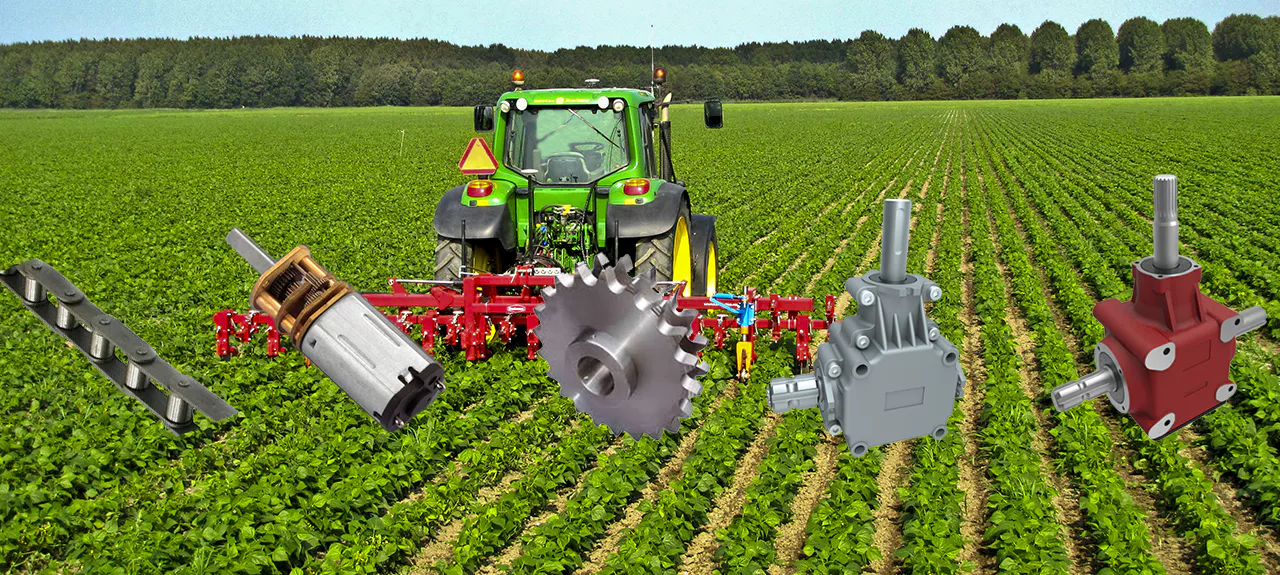
Choosing the Right Agricultural Gearbox
There are a number of different types of agricultural gearboxes available. Some are Bevel, while others are Shaft-mounted, bearing-mounted, or CZPT gearboxes. To learn more about these different types, read on. We'll explain how each works and what to look for in an agricultural gearbox. Alternatively, you can search for information on each type on the web. Agricultural gearboxes can be a great option for your next project.
Bevel gearboxes
Bevel gearboxes are a type of mechanical transmission system that uses enclosed spiral and straight bevel-gears to transmit rotational power. They are typically mounted on a right-angle shaft and have a wide range of horsepower and ratios. Some bevel gearboxes are designed to be installed at varying angles. For example, CZPT Gearbox provides bevel gear drives for portable grain augers, elevators, and carts.
Bevel gearboxes are the most common type of gearbox. They have a single-stage design and the beveled edges of two gears interlock to transfer torque and rotation. Bevel gearboxes have multiple advantages over other types of gearboxes. They are also more cost-effective, run quietly, and produce less transmittable torque. They are designed to be used in low-torque applications.
A right-angle gearbox is used for a variety of agricultural applications. It is well-suited for use with offset rotary fillers and hollow output shafts. It has a reduction ratio of 2.44:1. The gearbox is built with a cast-iron case and can produce power rates up to 49kW. These bevel gearboxes are used in small agricultural work, including crop treatment, soil preparation, and cement mixers.
Spiral and straight bevel gears have two major benefits. The first is more durable, while the latter is quieter. Both types have their advantages and disadvantages. Bevel gears can be noisy, so they may not be the best choice for your equipment. But the latter has many benefits. The Spiral bevel gear has a high degree of total coverage, but it costs more to produce.
Shaft-mounted
Shaft-mounted agricultural gearboxes are designed for conveyer systems. These devices have interchangeable mounting dimensions with CZPT and CZPT gearboxes. Agricultural gearboxes are critical to the entire food chain. Worn gears can cause significant loss to farmers. As a result, it is essential to purchase high-quality gearboxes for your farm equipment. The following are some tips to choose the right gearbox for your needs.
Agricultural tractors include an internal combustion engine 10 and a speed change gearbox. The engine's cylinder block is mounted on the gearbox casing. The gearbox casing extends under the driver's position and has an elongated shape in the longitudinal direction. The gearbox casing is connected to the rear axle casing 15 by a connecting shaft. The shafts are designed to engage and disengage in opposite directions.
The mounting position of the gearbox is an important consideration. Some applications require no foundation for the gear drive. Generally, a shaft-mounted agricultural gearbox can be attached to the drive equipment via a low-speed shaft. In addition, the shaft is secured around a solid shaft. Rigid flange couplings may be used to connect the gear drive and driven equipment. This type of mounting is preferred for applications where there is no foundation.
Shaft-mounted agricultural gearboxes are designed to optimize machine performance. CZPT Gearbox Company is an innovative company that manufactures top-quality gear drives for a variety of agricultural machinery. They can reverse engineer existing designs or create custom gearboxes for your farm machinery. These agricultural gearboxes are designed to help farmers optimize their machines for maximum efficiency. They transmit power from the input shaft to the output shafts and facilitate change of speed, direction, and rotation.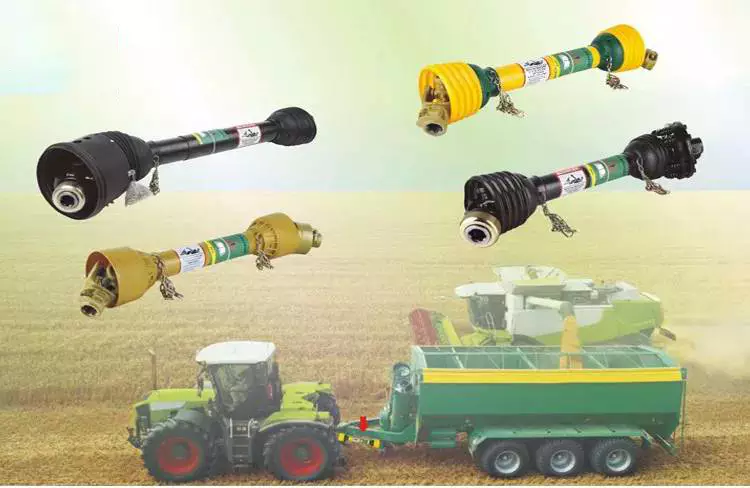
Shaft-mounted with bearings
If you are looking to buy an agricultural gearbox, it will be beneficial to look at the different types of shaft-mounted gearboxes available. Shaft-mounted gearboxes are often made of steel, and are commonly constructed with AGMA class 12 gearing. They typically utilize tapered roller bearings on all shafts, and have a patented triple seal system that prevents dirt and moisture from getting inside. Additionally, they are easy to install and remove, as they don't require any tools. Finally, they are built to last with minimal maintenance, and will provide maximum uptime.
Shaft-mounted agricultural gearboxes are generally made of steel, and are available in both cylindrical and square shapes. Some types of shafts are able to rotate axially within the bearing while maintaining radial load carrying capabilities. Despite the differences in the shapes of these shafts, they offer high levels of efficiency and performance. For example, the Float-A-Shaft(r) 3 to 2 right-angle gearbox can accommodate both round and square-base mounting, and is capable of generating up to 1100 in-lbs of torque.
Shaft-mounted agricultural gearboxes are constructed from two types of roller bearings: cylindrical roller bearings and tapered roller bearings. A cylindrical roller bearing has one row of balls that are enclosed within a cage, and it has a single axis. The other two rows of bearings have a single or double-row arrangement. Both of them have high axial rigidity and can handle high axial loads.
CZPT gearboxes
The demand for food has skyrocketed since the turn of the century, and the World Bank estimates that the number of people on the planet will grow by 80 million annually by 2025. As the demand for food grows, agricultural machinery manufacturers are coming up with innovative ways to make the most of their land. This results in shorter cropping cycles and greater wear and tear on farm equipment, including CZPT agricultural gearboxes.
Bevel gearboxes are enclosed straight or spiral gears that transmit rotational power to various parts of agricultural machinery. They are available in a variety of right-angle and spiral configurations. The CZPT Gearbox, for example, features a 68-degree bevel gear drive for augers and grain carts. The company also offers a 50-degree bevel gear drive. These gearboxes are made with the latest technology and incorporate horizontally split housing designs.
Agricultural gearboxes from CZPT are available in a variety of designs, including reversing gears. Reversing gears feature ball bearings that reduce friction and increase efficiency. This gearbox can be purchased in a wide range of power ratings and blade counts, allowing the farmer to choose the one that works best for their needs. This will ensure long-term functionality and effectiveness. So whether you're a farmer or a manufacturer of agricultural equipment, a CZPT agricultural gearbox will work for you.
Bevel gearboxes with bearings
The bevel gearing is a popular choice for agricultural gearboxes due to its high load capacity. The bevel gearing is widely used in mechanical transmission systems, including agricultural tractors. For modern harvesters, high-performance gearboxes are necessary for smooth operation. Leading agricultural equipment manufacturers rely on CZPT Gearbox Company to provide these high-quality and durable drive systems. This is why we supply bevel gearboxes for agricultural machinery.
A bevel gearbox can be either straight or helical. The latter option is the simplest type and tends to be cheaper to produce. However, it is difficult to realize small profile coverage with straight gearwheels. Furthermore, it is less efficient in transmitting torque. The bevel gearbox can be used for both clockwise and counterclockwise rotation. It is available with a standard mount and aluminum casing.
Depending on the type of agriculture machinery, bevel gearboxes with bearings are suitable for many tasks. Their versatility allows them to be used in a variety of mechanical applications. The double gear allows the upper bevel gear angular gear 2 to pivot relative to the lower bevel gear angular gear 3.
Besides bearings, other factors influence the performance of agricultural gearboxes. Insufficient data may make it difficult to obtain the exact gear. For this reason, a broken gear requires a detailed manufacturing drawing. This drawing requires expertise in technical gear, as well as specialized engineering manpower. It also increases the cost of production. The gears are subjected to heat treatment before being shipped to the customer.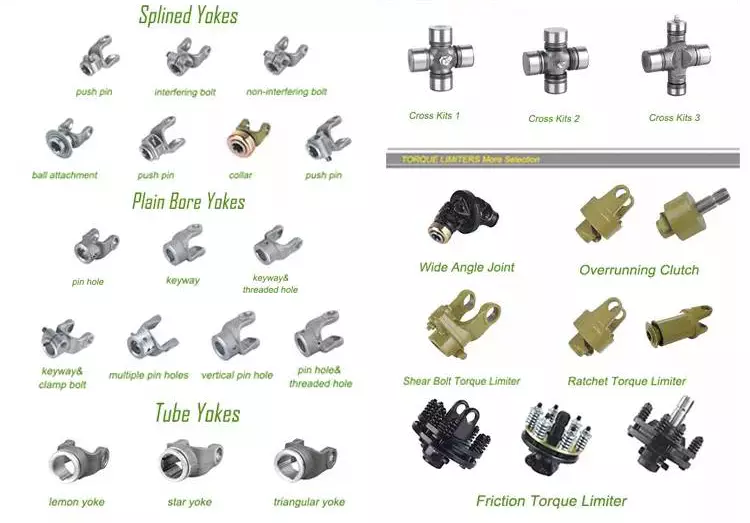
Bevel gearboxes with CZPT gearboxes
The demand for agricultural products has increased dramatically since 2010. The world population is increasing at a rapid pace (80 million people per year until 2025), but land is not. Farmers are looking for ways to maximize their land's potential to grow more food. This increased demand for agricultural machinery is driving the need for highly efficient gearboxes. With replacement parts easily available, manufacturers can meet the growing demand for agricultural equipment.

editor by CX 2024-03-26
China Good quality High Precision High Torque Ratio 4.5.10.16.20.25: 1 Planetary Gear Reducer Gearbox for Stepper Motor agricultural pto gearbox suppliers
Product Description
Why Choose Us
Products Description
Product Paramenters
| MODEL | PLE60 | Reduction ratio | Number of stage | |
| Nominal Output Torque | N.m | 16 | 3 | L1 |
| 25 | 1 | |||
| 28 | 5 | |||
| 20 | 7 | |||
| 10 | 10 | |||
| 30 | 16 | L2 | ||
| 30 | 20 | |||
| 32 | 25 | |||
| 30 | 28 | |||
| 16 | 30 | |||
| 30 | 35 | |||
| 25 | 40 | |||
| 25 | 50 | |||
| 20 | 70 | |||
| 10 | 100 | |||
| Sudden Stop Torque | N.m | 2 times of nominal output torque | ||
| Nominal Input Speed | rpm | 1000 | ||
| Max Input Speed | rpm | 2000 | ||
| Max Radial Load | N | 400 | ||
| Max Axial Load | N | 230 | ||
| Efficiency | % | 96 | L1 | |
| 92 | L2 | |||
| Backlash | arcmin | ≤15 | L1 | |
| ≤20 | L2 | |||
| Noise | dB | ≤55 | ||
| Protection Level | IP | 54 | ||
| Life Span | h | 20000 | ||
| Working Temp. | C° | -20°~+150° | ||
| Lubrication Method | Permanent Lubrication | |||
| Weight | kg | ≈0.70 | PLE60-L1 | |
| ≈0.90 | PLE60-L2 | |||
| ≈080 | PLE60-L1SW/SW50/R6.3/R10 | |||
| ≈1.05 | PLE60-L2SW/SW50/R6.3/R11 | |||
Company Profile
Certifications
Exhibition
Product packaging
/* January 22, 2571 19:08:37 */!function(){function s(e,r){var a,o={};try{e&&e.split(",").forEach(function(e,t){e&&(a=e.match(/(.*?):(.*)$/))&&1
| Application: | Motor, Electric Cars, Motorcycle, Machinery, Marine, Toy, Agricultural Machinery, Car |
|---|---|
| Function: | Distribution Power, Clutch, Change Drive Torque, Change Drive Direction, Speed Changing, Speed Reduction, Speed Increase |
| Layout: | Cycloidal |
| Hardness: | Hardened Tooth Surface |
| Installation: | Vertical Type |
| Step: | Single-Step |
| Customization: |
Available
| Customized Request |
|---|

Choosing an Agricultural Gearbox
When it comes to choosing an agricultural gearbox, you may be wondering which one is right for you. The right gearbox for your tractor is important for several reasons. Here are some factors to consider. This article will provide an overview of these components. These parts include the Bevel gearbox, the Surface finish, Ellipticity, Bearings, and more. CZPT P/L offers a range of gearboxes for many different agricultural applications. The company's PTO Speed Reducer/Increaser is specially designed to maintain the original rotation of PTO output.
Bevel gearboxes
Agricultural bevel gearboxes have high load capacity, making them an excellent choice for heavy-duty machines. Bevel gearing is also popular in mechanical transmission systems, such as those found on tractor transmission systems. Modern harvesters and other agricultural equipment require high-performance gearboxes to maintain efficient performance. To meet these requirements, agricultural equipment OEMs trust the Bevel gearboxes manufactured by CZPT Gearbox Company.
Unlike conventional worm gears, bevel gears use multiple shafts to transmit power. The bevel gears have three types of shafts, namely, hollow, projecting, and double-extended. In addition to being hollow, bevel gears can have additional shafts installed opposite the input shaft. They are available in a standard mount, aluminum housing, and three shaft types: double-extended, hollow, and projecting.
Agricultural bevel gearboxes are typically made from closed-grain cast-iron, although higher-sized models are made from SG 500/7 material. The screw is made from Cr-Mo medium carbon steel, which is hardened and tempered to maintain high core strength. A tapered roller bearing is mounted in the housing and is designed to carry heavy axial and radial loads. These gearboxes are also widely used in mixing, distribution, and cleaning machinery.
Bevel gearboxes for agricultural equipment are primarily used in agricultural machinery applications. Agricultural machinery often uses a PTO to transmit torque, but can only provide it at low speeds. Because of this, gearboxes are used for low-speed, massive-torque applications. Soil preparation and crop treatment are two common uses for these gearboxes. They are also useful in cement mixers.
Surface finish
In engineered gearboxes, the surface finish of the gear tooth surfaces is critical for smooth operation. Microscopic examination of gear tooth surfaces reveals a fine, unidirectional pattern. Traditionally used finishing methods include hob shaving, gear grinding, and honing. These techniques can improve the overall finish, but they also have their drawbacks. To overcome these problems, manufacturers use modern machine tooling techniques.
Agricultural gearboxes must be free from casting defects and mechanical damage. The processing surface must be flawless, with the ellipticity of the shaft hole no greater than 0.02 mm, and the centerline unevenness of the shaft holes is less than 0.015 mm. The relationship between shafts and bearing housing must be within 0.6 mm. These standards are crucial for the operation of agricultural machinery gearboxes.
Earlier, the gears were made of H11 and H13 tool steel, which progressively weakened after 20 gears. The tempering temperature is five to seven degrees Celsius or ten degrees Fahrenheit, depending on the steel used. To address this problem, Alloy 718 was developed. The alloy improved the life of die inserts, which reduced the overall cost. Further, the improved surface finish of agricultural gearboxes helped the customers reduce operating costs.
Ellipticity
A number of tasks require the use of an agricultural gearbox. These tasks can range from gardening to maintaining green spaces. These gearboxes transmit power from the input shaft to the output shaft, facilitating the change in direction, speed, or rotation. A quality gearbox is vital for the performance of agricultural machinery. Consider the type of operation you will be performing before buying one. You will also need to decide whether you will lubricate it.
An CZPT P/L Gearbox is one of their products. The company offers a full line of agricultural gearboxes at competitive prices. These gearboxes are designed to reduce input shaft speed and increase the PTO speed. The PTO Speed Reducer/Increaser is specially designed for this application. It helps maintain the original rotation of the PTO output shaft. It is suitable for various agricultural applications, including harvesters, balers, and cultivators.
An agricultural gearbox has an elliptic nature. It rotates around an axle core 90 degrees to create a bias state. The axle core of an agricultural gearbox rotates at a 90-degree angle to keep the shaft of the farming arbor in a neutral state. The bias state reduces the rotary driving force and reduces the amount of energy used in the operation. If a gearbox is designed correctly, it will keep a desired rotation torque.
Bearings
Agricultural gearboxes require high-quality bearings, and the global market is undergoing a transformation as more agricultural equipment becomes mechanized. The demand for bearings in agricultural equipment is expected to increase in the future, as cropping cycles will become shorter, and machinery will be used more intensively. Consequently, the wear on agricultural gear teeth and bearings will increase. This will result in a higher replacement rate for these parts.
Agricultural gearboxes must be able to withstand the high demands placed on them by the mounted farming implements. Harrows are a common example, and their disc-shaped attachments work to mix the top layer of soil. Because of their high demands, they must rotate continuously, and no matter what the terrain, they must be easy to run. Moreover, customised bearings will provide better seals.
In a study of 53 different agricultural gearboxes conducted by CZPT UK, they simulated 73 gear selections to find the right type of bearing. The simulation model took four weeks to set up and seven hours to run. As a result, CZPT always selects the "best bearing for the job" - a fitting solution. As such, CZPT understands the end user's needs.
Quality of materials
Agricultural gearboxes play a vital role in the production of food. With the world's population increasing, the need for food will also increase, and that means a greater need for efficient gearboxes. To make this happen, gearboxes must be able to withstand a variety of environmental conditions, including high and low temperatures, operation in arid and moist environments, and safety regulations.
A bevel gearbox has spiral bevel pinions that transmit rotational power to the axle. It is used in a variety of agricultural applications and is available in a range of ratios, horsepower, and configurations. This right-angle gear drive is widely used in portable grain elevators and grain carts. It has a 15-mm shaft diameter and is compatible with offset rotary fillers and hollow output shafts.
The gear box of a tractor is usually made of grey cast iron. Grey cast iron is a great choice for this component because it provides good wear resistance and vibration dampening. Belt pulleys are also made from grey cast iron. Large belt pulleys are made by casting processes. Similarly, the brake drum material needs to be high-quality to be effective. It is generally made of grey iron ASTM A48 Class 35.

editor by CX 2024-03-25
China OEM K series spiral bevel helical speed Gearbox S series F series R series gear speed reducer bevel gearbox
Product Description
| Model Number | K series spiral bevel helical speed reducer | Structure Type | K KA KF KAF KAZ KAT KAB |
| Assembly Method | 1-6 | Input power | 0.18-180W |
| Enamelled Wire: | 100% Copper Wire | Reducer body | Steel |
| Ratio | 0.18-180W | Brand | FOX MOTOR |
/* January 22, 2571 19:08:37 */!function(){function s(e,r){var a,o={};try{e&&e.split(",").forEach(function(e,t){e&&(a=e.match(/(.*?):(.*)$/))&&1
| Application: | Motor, Machinery, Agricultural Machinery, Bending Machine |
|---|---|
| Hardness: | Hardened Tooth Surface |
| Installation: | Horizontal or Vertical |
| Layout: | Spiral bevel gear reducer |
| Gear Shape: | Bevel Gear |
| Step: | Single-Step |
| Samples: |
US$ 99/Piece
1 Piece(Min.Order) | |
|---|
| Customization: |
Available
| Customized Request |
|---|

How do gear reducers enhance the efficiency of conveyor systems and robotics?
Gear reducers play a significant role in improving the efficiency of both conveyor systems and robotics by optimizing speed, torque, and control. Here's how they contribute:
Conveyor Systems:
In conveyor systems, gear reducers enhance efficiency in the following ways:
- Speed Control: Gear reducers allow precise control over the rotational speed of conveyor belts, ensuring that materials are transported at the desired speed for efficient production processes.
- Torque Adjustment: By adjusting gear ratios, gear reducers provide the necessary torque to handle varying loads and prevent overloading, minimizing energy wastage.
- Reverse Operation: Gear reducers enable smooth bidirectional movement of conveyor belts, facilitating tasks such as loading, unloading, and distribution without the need for additional components.
- Synchronization: Gear reducers ensure synchronized movement of multiple conveyor belts in complex systems, optimizing material flow and minimizing jams or bottlenecks.
Robotics:
In robotics, gear reducers enhance efficiency through the following means:
- Precision Movement: Gear reducers provide precise control over the movement of robot joints and arms, enabling accurate positioning and manipulation of objects.
- Reduced Inertia: Gear reducers help reduce the inertia experienced by robotic components, allowing for quicker and more responsive movements while conserving energy.
- Compact Design: Gear reducers offer a compact and lightweight solution for achieving various motion profiles in robotic systems, allowing for efficient use of space and resources.
- Torque Amplification: By amplifying torque from the motor, gear reducers enable robots to handle heavier loads and perform tasks that require greater force, enhancing their overall capabilities.
By providing precise speed control, torque adjustment, and reliable motion transmission, gear reducers optimize the performance of conveyor systems and robotics, leading to improved efficiency, reduced energy consumption, and enhanced operational capabilities.

Can gear reducers be used for both speed reduction and speed increase?
Yes, gear reducers can be utilized for both speed reduction and speed increase, depending on their design and arrangement. The functionality to either decrease or increase rotational speed is achieved by altering the arrangement of gears within the gearbox.
1. Speed Reduction: In speed reduction applications, a gear reducer is designed with gears of different sizes. The input shaft connects to a larger gear, while the output shaft is connected to a smaller gear. As the input shaft rotates, the larger gear turns the smaller gear, resulting in a decrease in output speed compared to the input speed. This configuration provides higher torque output at a lower speed, making it suitable for applications that require increased force or torque.
2. Speed Increase: For speed increase, the gear arrangement is reversed. The input shaft connects to a smaller gear, while the output shaft is connected to a larger gear. As the input shaft rotates, the smaller gear drives the larger gear, resulting in an increase in output speed compared to the input speed. However, the torque output is lower than that of speed reduction configurations.
By choosing the appropriate gear ratios and arrangement, gear reducers can be customized to meet specific speed and torque requirements for various industrial applications. It's important to select the right type of gear reducer and configure it correctly to achieve the desired speed reduction or speed increase.

What are the benefits of using a gear reducer in industrial applications?
Gear reducers offer several benefits that make them indispensable in various industrial applications:
1. Speed Reduction: Gear reducers allow the reduction of high-speed input from motors or engines to lower, more usable output speeds for specific applications, ensuring proper equipment operation and safety.
2. Torque Increase: By leveraging the mechanical advantage of gear ratios, gear reducers can significantly increase torque output, enabling the handling of heavy loads and providing the necessary power for tasks such as lifting, conveying, and processing.
3. Precise Control: Gear reducers enable fine-tuning of rotational speed and torque, providing precise control over machinery and processes, which is crucial in industries like manufacturing, material handling, and robotics.
4. Shock Load Absorption: Gear reducers can absorb and dampen sudden shocks or changes in load, protecting both the machinery and connected components from abrupt forces that could otherwise lead to damage.
5. Versatility: With various gear types (e.g., spur, helical, worm) and designs, gear reducers can be tailored to different applications, including those requiring specific speed ratios, torque ranges, and environmental conditions.
6. Efficient Power Transmission: Gear reducers offer high mechanical efficiency, minimizing energy loss during power transmission, which is especially valuable in energy-conscious industries.
7. Compact Design: Gear reducers provide a compact solution for transmitting power and adjusting speeds, making them suitable for installations with space constraints.
8. Reliability and Longevity: Well-designed and properly maintained gear reducers can offer extended service life, contributing to reduced downtime and maintenance costs.
Overall, gear reducers enhance the performance, efficiency, and reliability of industrial equipment, making them essential components in a wide range of applications across various industries.


editor by CX 2024-03-14
China Standard Slew Drive Reducer Hydraulic Slewing Gearbox Planetary Reducers Gear Speed Reducer wholesaler
Product Description
Product Description
Product description:
planetary reducer gearbox is designed with large torque and transmission efficiency, low-speed stability, compact radial size, low noise, etc.
The main devices we are making are walking reducers, lifting reducers and swing reducers.
They are widely used for Truck ,vehicle cranes, crawler cranes, truck mounted cranes, marine cranes, aerial work trucks, excavators, etc.
If above drawing and specifications not suit you,we also can custom according to your specifications,welcome to contact me.
Above reducers we all have stock,will ship out very soon.
Main Products
Our factory mainly produce high quality hydraulic winch,electric winch,hydraulic motor ,gearbox,slewing drive reducers,final drive reducers,we also can custom according to your specifications.if need more information ,pls contact us for the whole product catalog.
Company Profile
CHINAMFG Chuangdong New Material Technology Co., Ltd. is located in CHINAMFG City, ZheJiang Province, China. The factory was establishedin 2008 and specializes in the research and development of planetary transmission technology products. The factory has completeequipment and strong processing capabilities, including boring machines, machining centers, gear shapers, CNC lathes, drillingmachines, and other processing equipment. In addition, the inspection and testing equipment is complete, with main inspectionmethods such as metallographic and physicochemical examination, gear inspection, and finished product loading experiments.
The factory has successively developed a series of planetary transmission mechanisms in the fields of lifting machinery,
exploration machinery, obstacle clearance machinery, aerial work vehicle machinery , marine machinery, petroleum machinery, and truck mounted cranes. At present, our companys main products include 8-100 ton hoisting and slewing mechanisms for truck cranes,16-100 ton walking mechanisms for crawler cranes, 18-30 meter hoisting and slewing mechanisms for aerial work vehicles, 6-25 ton hydraulic winches and slewing mechanisms for truck mounted cranes, and 1.5-30 ton IYJ series hydraulic winches widely used in obstacle clearing machinery, marine machinery, and petroleum machinery. The company actively cooperates with various main engine manufacturers to develop products, and also cooperates with ZheJiang Machinery Design Institute, ZheJiang University, HangZhou
University of Technology and other universities to develop a series of refined and new products, which have won recognition fromthe vast market.
In recent years, with the development and growth of domestic construction machinery, the company has closely followed the marketsituation, vigorously invested in equipment, built standardized factories, and continuously expanded and strengthened the companys scale.
We welcome your cooperation.
Packaging & Shipping
package:wooden boxes
shipping:by sea/rail/road or as required
Products Application
FAQ
Q1:What's you MOQ?
A:MOQ is 1 piece.
Q2:Do you have catalog?
yes,pls contact us for the catalog
Q3 how to ship?
ship by sear/according to your request.
Q4;If the reducer are not the 1 you need,what should do?
Pls send us drawing and specifications you need,then we custom according to your request.
/* January 22, 2571 19:08:37 */!function(){function s(e,r){var a,o={};try{e&&e.split(",").forEach(function(e,t){e&&(a=e.match(/(.*?):(.*)$/))&&1
| Application: | Motor, Electric Cars, Motorcycle, Machinery, Marine, Toy, Agricultural Machinery, Car |
|---|---|
| Hardness: | Hardened Tooth Surface |
| Installation: | Horizontal Type |
| Layout: | Coaxial |
| Gear Shape: | Cylindrical Gear |
| Step: | Three-Step |
| Customization: |
Available
| Customized Request |
|---|

Can gear reducers be customized for specific industrial needs and requirements?
Yes, gear reducers can be customized to meet specific industrial needs and requirements. Manufacturers offer customization options to ensure that gear reducers are tailored to the unique demands of various applications:
1. Gear Ratio Selection: Gear reducers can be designed with specific gear ratios to achieve the desired speed reduction or increase, catering to the specific requirements of the machinery or equipment.
2. Shaft Configurations: Gear reducers can be configured with different shaft sizes, lengths, and orientations to fit seamlessly into existing systems or accommodate specific mounting arrangements.
3. Torque Capacity: Customized gear reducers can be designed to handle higher or lower torque loads based on the application's operational requirements.
4. Environmental Considerations: Gear reducers can be customized with special coatings, materials, or seals to withstand harsh environments, extreme temperatures, or corrosive conditions.
5. Noise and Vibration Reduction: Custom designs can incorporate features to reduce noise and dampen vibrations, enhancing the overall operation and user experience.
6. Mounting and Connection Options: Manufacturers can adapt gear reducer designs to include specific mounting interfaces or connection methods that align with the equipment's design.
7. Lubrication and Maintenance: Customized gear reducers can include features for easy maintenance, such as accessible lubrication points or monitoring systems.
8. Integration with Controls: Gear reducers can be customized to integrate seamlessly with control systems, sensors, or automation processes, enhancing system efficiency and performance.
By collaborating with manufacturers and providing detailed specifications, industries can obtain tailor-made gear reducers that address their specific operational needs and contribute to the success of their applications.
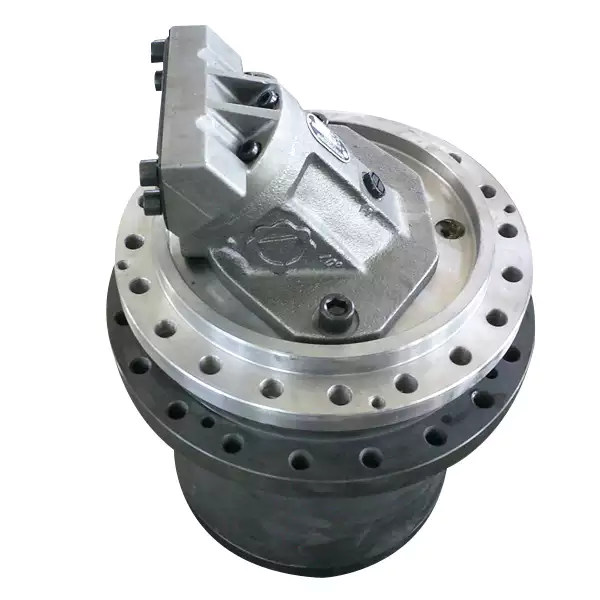
What factors should be considered when selecting the right gear reducer?
Choosing the appropriate gear reducer involves considering several crucial factors to ensure optimal performance and efficiency for your specific application:
- 1. Torque and Power Requirements: Determine the amount of torque and power your machinery needs for its operation.
- 2. Speed Ratio: Calculate the required speed reduction or increase to match the input and output speeds.
- 3. Gear Type: Select the appropriate gear type (helical, bevel, worm, planetary, etc.) based on your application's torque, precision, and efficiency requirements.
- 4. Mounting Options: Consider the available space and the mounting configuration that suits your machinery.
- 5. Environmental Conditions: Evaluate factors such as temperature, humidity, dust, and corrosive elements that may impact the gear reducer's performance.
- 6. Efficiency: Assess the gear reducer's efficiency to minimize power losses and improve overall system performance.
- 7. Backlash: Consider the acceptable level of backlash or play between gear teeth, which can affect precision.
- 8. Maintenance Requirements: Determine the maintenance intervals and procedures necessary for reliable operation.
- 9. Noise and Vibration: Evaluate noise and vibration levels to ensure they meet your machinery's requirements.
- 10. Cost: Compare the initial cost and long-term value of different gear reducer options.
By carefully assessing these factors and consulting with gear reducer manufacturers, engineers and industry professionals can make informed decisions to select the right gear reducer for their specific application, optimizing performance, longevity, and cost-effectiveness.

Are there variations in gear reducer designs for specific tasks and applications?
Yes, gear reducer designs vary widely to suit specific tasks and applications across various industries. Manufacturers offer a range of gear reducer types and configurations to accommodate different requirements, including:
- Helical Gear Reducers: These are versatile and provide smooth and efficient torque transmission. They are commonly used in applications requiring high precision and moderate speed reduction, such as conveyors, mixers, and agitators.
- Bevel Gear Reducers: These are ideal for transmitting power between intersecting shafts. They are often used in heavy machinery, printing presses, and automotive applications.
- Worm Gear Reducers: These provide compact solutions and are suitable for applications with higher speed reduction requirements, such as conveyor systems, winches, and elevators.
- Planetary Gear Reducers: These offer high torque density and are used in applications demanding precise control, such as robotics, aerospace, and heavy-duty machinery.
- Parallel Shaft Gear Reducers: Commonly used in industrial machinery, these reducers are designed for high torque and reliability.
- Right-Angle Gear Reducers: These are used when space limitations require a change in shaft direction, commonly found in packaging equipment and conveyors.
Each type of gear reducer has unique features and benefits that make it suitable for specific tasks. Manufacturers often provide customization options to tailor gear reducers to the precise requirements of an application, including gear ratios, mounting options, and input/output configurations.
Therefore, the variation in gear reducer designs allows industries to select the most appropriate type based on factors such as torque, speed, space constraints, precision, and environmental conditions.


editor by CX 2024-02-29
China best CZPT Ratio 20: 1 Low Noise Two Stage 750W Motor Planetary Gear Reducer gearbox adjustment
Product Description
Newgear Ratio 20:1 Low Noise Two Stage 750W Motor Planetary Gear Reducer
Planetary gearbox is a kind of reducer with wide versatility. The inner gear adopts low carbon alloy steel carburizing quenching and grinding or nitriding process. Planetary gearbox has the characteristics of small structure size, large output torque, high speed ratio, high efficiency, safe and reliable performance, etc. The inner gear of the planetary gearbox can be divided into spur gear and helical gear. Customers can choose the right precision reducer according to the needs of the application.
Product Parameters
Characteristic:
1. Split design, more output options
2. The input and output dimensions can be seamlessly switched with the straight tooth series
3. The double support cage planet carrier has high reliability and is suitable for high-speed and frequent CHINAMFG and reverse rotation
4. The design of double-stage single support support has high cost performance
5. Keyway can be opened for the force shaft
6. Helical gear transmission is more stable and has large bearing capacity
7. Accurate positioning of low return clearance
8. Specification range: 60-120mm
9. Speed ratio range: 3-100
10. Accuracy range: 1-3 arcmin (P1); 3-5 arcmin (P2)
| Specifications | PW60 | PW90 | PW120 | |||
| Technal Parameters | ||||||
| Max. Torque | Nm | 1.5times rated torque | ||||
| Emergency Stop Torque | Nm | 2.5times rated torque | ||||
| Max. Radial Load | N | 1350 | 3100 | 6100 | ||
| Max. Axial Load | N | 630 | 1300 | 2800 | ||
| Torsional Rigidity | Nm/arcmin | 5 | 10 | 20 | ||
| Max.Input Speed | rpm | 6000 | 6000 | 6000 | ||
| Rated Input Speed | rpm | 4000 | 3000 | 3000 | ||
| Noise | dB | ≤58 | ≤60 | ≤65 | ||
| Average Life Time | h | 20000 | ||||
| Efficiency Of Full Load | % | L1≥95% L2≥90% | ||||
| Return Backlash | P1 | L1 | arcmin | ≤3 | ≤3 | ≤3 |
| L2 | arcmin | ≤5 | ≤5 | ≤5 | ||
| P2 | L1 | arcmin | ≤5 | ≤5 | ≤5 | |
| L2 | arcmin | ≤7 | ≤7 | ≤7 | ||
| Moment Of Inertia Table | L1 | 3 | Kg*cm2 | 0.16 | 0.61 | 3.25 |
| 4 | Kg*cm2 | 0.14 | 0.48 | 2.74 | ||
| 5 | Kg*cm2 | 0.13 | 0.47 | 2.71 | ||
| 7 | Kg*cm2 | 0.13 | 0.45 | 2.62 | ||
| 8 | Kg*cm2 | 0.13 | 0.45 | 2.62 | ||
| 10 | Kg*cm2 | 0.13 | 0.40 | 2.57 | ||
| L2 | 12 | Kg*cm2 | 0.13 | 0.61 | 0.45 | |
| 15 | Kg*cm2 | 0.13 | 0.61 | 0.45 | ||
| 20 | Kg*cm2 | 0.13 | 0.45 | 0.45 | ||
| 25 | Kg*cm2 | 0.13 | 0.40 | 0.40 | ||
| 28 | Kg*cm2 | 0.13 | 0.45 | 0.45 | ||
| 30 | Kg*cm2 | 0.13 | 0.67 | 0.45 | ||
| 35 | Kg*cm2 | 0.13 | 0.45 | 0.45 | ||
| 40 | Kg*cm2 | 0.13 | 0.45 | 0.45 | ||
| 50 | Kg*cm2 | 0.13 | 0.40 | 0.40 | ||
| 70 | Kg*cm2 | 0.13 | 0.40 | 0.40 | ||
| 100 | Kg*cm2 | 0.13 | 0.40 | 0.40 | ||
| Technical Parameter | Level | Ratio | PW60 | PW90 | PW120 | |
| Rated Torque | L1 | 3 | Nm | 35 | 100 | 165 |
| 4 | Nm | 43 | 125 | 220 | ||
| 5 | Nm | 43 | 125 | 220 | ||
| 7 | Nm | 40 | 98 | 200 | ||
| 8 | Nm | 40 | 90 | 200 | ||
| 10 | Nm | 25 | 70 | 150 | ||
| L2 | 12 | Nm | 35 | / | 165 | |
| 15 | Nm | 35 | 100 | 165 | ||
| 20 | Nm | 43 | 125 | 220 | ||
| 25 | Nm | 43 | 125 | 220 | ||
| 28 | Nm | 43 | 125 | 220 | ||
| 30 | Nm | 35 | 100 | 165 | ||
| 35 | Nm | 43 | 125 | 210 | ||
| 40 | Nm | 43 | 125 | 210 | ||
| 50 | Nm | 43 | 125 | 210 | ||
| 70 | Nm | 40 | 98 | 200 | ||
| 100 | Nm | 25 | 70 | 150 | ||
| Degree Of Protection | IP65 | |||||
| Operation Temprature | ºC | - 10ºC to -90ºC | ||||
| Weight | L1 | kg | 1.2 | 2.8 | 7.6 | |
| L2 | kg | 1.55 | 3.95 | 10.5 | ||
Company Profile
Packaging & Shipping
1. Lead time: 7-10 working days as usual, 20 working days in busy season, it will be based on the detailed order quantity;
2. Delivery: DHL/ UPS/ FEDEX/ EMS/ TNT
FAQ
1. who are we?
Hefa Group is based in ZheJiang , China, start from 1998,has a 3 subsidiaries in total.The Main Products is planetary gearbox,timing belt pulley, helical gear,spur gear,gear rack,gear ring,chain wheel,hollow rotating platform,module,etc
2. how can we guarantee quality?
Always a pre-production sample before mass production;
Always final Inspection before shipment;
3. how to choose the suitable planetary gearbox?
First of all,we need you to be able to provide relevant parameters.If you have a motor drawing,it will let us recommend a suitable gearbox for you faster.If not,we hope you can provide the following motor parameters:output speed,output torque,voltage,current,ip,noise,operating conditions,motor size and power,etc
4. why should you buy from us not from other suppliers?
We are 22 years experiences manufacturer on making the gears, specializing in manufacturing all kinds of spur/bevel/helical gear, grinding gear, gear shaft, timing pulley, rack, planetary gear reducer, timing belt and such transmission gear parts
5. what services can we provide?
Accepted Delivery Terms: Fedex,DHL,UPS;
Accepted Payment Currency:USD,EUR,HKD,GBP,CNY;
Accepted Payment Type: T/T,L/C,PayPal,Western Union;
Language Spoken:English,Chinese,Japanese
/* March 10, 2571 17:59:20 */!function(){function s(e,r){var a,o={};try{e&&e.split(",").forEach(function(e,t){e&&(a=e.match(/(.*?):(.*)$/))&&1
| Application: | Motor, Motorcycle, Machinery, Marine, Agricultural Machinery, Automation Equipment |
|---|---|
| Hardness: | Hardened Tooth Surface |
| Installation: | Vertical Type |
| Layout: | Coaxial |
| Gear Shape: | Cylindrical Gear |
| Step: | Single-Step |
| Samples: |
US$ 71/Piece
1 Piece(Min.Order) | |
|---|
| Customization: |
Available
| Customized Request |
|---|
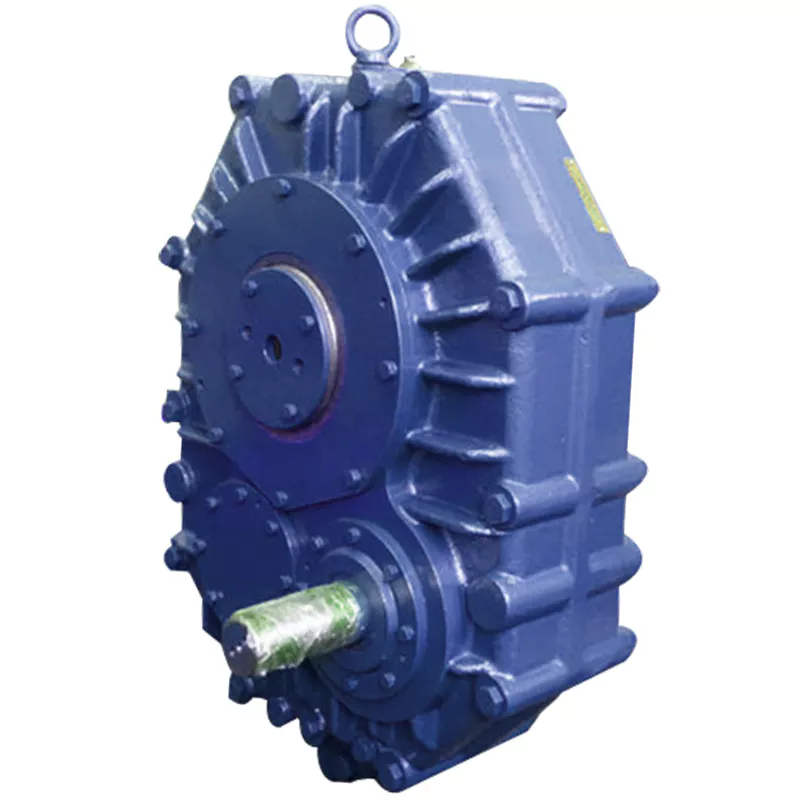
Are there any disadvantages or limitations to using gear reducer systems?
While gear reducer systems offer numerous advantages, they also come with certain disadvantages and limitations that should be considered during the selection and implementation process:
1. Size and Weight: Gear reducers can be bulky and heavy, especially for applications requiring high gear ratios. This can impact the overall size and weight of the machinery or equipment, which may be a concern in space-constrained environments.
2. Efficiency Loss: Despite their high efficiency, gear reducers can experience energy losses due to friction between gear teeth and other components. This can lead to a reduction in overall system efficiency, particularly in cases where multiple gear stages are used.
3. Cost: The design, manufacturing, and assembly of gear reducers can involve complex processes and precision machining, which can contribute to higher initial costs compared to other power transmission solutions.
4. Maintenance: Gear reducer systems require regular maintenance, including lubrication, inspection, and potential gear replacement over time. Maintenance activities can lead to downtime and associated costs in industrial settings.
5. Noise and Vibration: Gear reducers can generate noise and vibrations, especially at high speeds or when operating under heavy loads. Additional measures may be needed to mitigate noise and vibration issues.
6. Limited Gear Ratios: While gear reducers offer a wide range of gear ratios, there may be limitations in achieving extremely high or low ratios in certain designs.
7. Temperature Sensitivity: Extreme temperatures can affect the performance of gear reducer systems, particularly if inadequate lubrication or cooling is provided.
8. Shock Loads: While gear reducers are designed to handle shock loads to some extent, severe shock loads or abrupt changes in torque can still lead to potential damage or premature wear.
Despite these limitations, gear reducer systems remain widely used and versatile components in various industries, and their disadvantages can often be mitigated through proper design, selection, and maintenance practices.
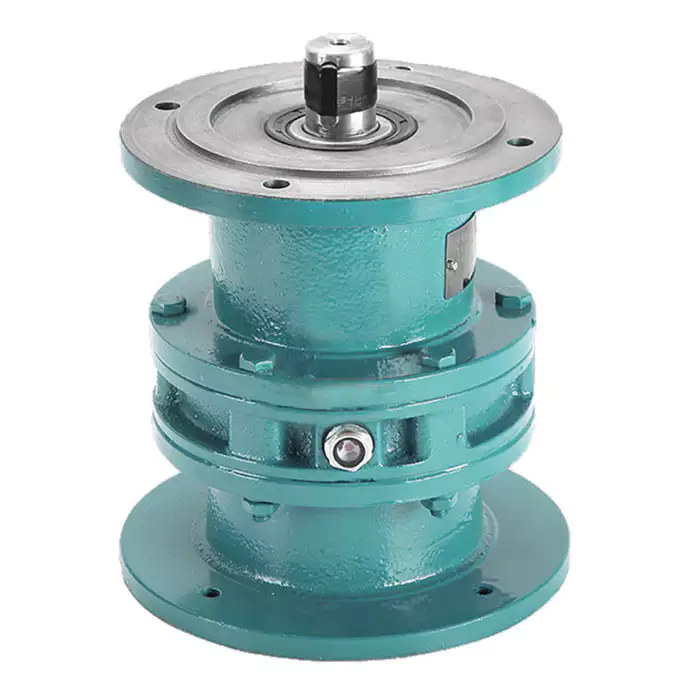
How do gear reducers handle shock loads and sudden changes in torque?
Gear reducers are designed to handle shock loads and sudden changes in torque through several mechanisms that enhance their durability and reliability in challenging operating conditions.
1. Robust Construction: Gear reducers are constructed using high-strength materials and precision manufacturing techniques. This ensures that the gears, bearings, and other components can withstand sudden impacts and high torque fluctuations without deformation or failure.
2. Shock-Absorbing Features: Some gear reducer designs incorporate shock-absorbing features, such as flexible couplings, elastomeric elements, or torsionally flexible gear designs. These features help dampen and dissipate the energy from sudden shocks or torque spikes, reducing the impact on the entire system.
3. Torque Limiters: In applications where shock loads are common, torque limiters may be integrated into the gear reducer. These devices automatically disengage or slip when a certain torque threshold is exceeded, preventing damage to the gears and other components.
4. Overload Protection: Gear reducers can be equipped with overload protection mechanisms, such as shear pins or torque sensors. These mechanisms detect excessive torque and disengage the drive temporarily, allowing the system to absorb the shock or adjust to the sudden torque change.
5. Proper Lubrication: Adequate lubrication is essential for managing shock loads and sudden torque changes. High-quality lubricants reduce friction and wear, helping the gear reducer withstand dynamic forces and maintain smooth operation.
6. Dynamic Load Distribution: Gear reducers distribute dynamic loads across multiple gear teeth, which helps prevent localized stress concentrations. This feature minimizes the risk of tooth breakage and gear damage when subjected to sudden changes in torque.
By incorporating these design features and mechanisms, gear reducers can effectively handle shock loads and sudden changes in torque, ensuring the longevity and reliability of various industrial and mechanical systems.

How do gear reducers contribute to speed reduction and torque increase?
Gear reducers play a crucial role in mechanical systems by achieving speed reduction and torque increase through the principle of gear ratios. Here's how they work:
Gear reducers consist of multiple gears with different sizes, known as gear pairs. These gears are meshed together, and their teeth interlock to transmit motion and power. The gear ratio is determined by the ratio of the number of teeth on the input gear (driver) to the number of teeth on the output gear (driven).
Speed Reduction: When a larger gear (output gear) is driven by a smaller gear (input gear), the output gear rotates at a slower speed than the input gear. This reduction in speed is proportional to the gear ratio. As a result, gear reducers are used to slow down the rotational speed of the output shaft compared to the input shaft.
Torque Increase: The interlocking teeth of gears create a mechanical advantage that allows gear reducers to increase torque output. When the input gear applies a force (torque) to the teeth, it is transmitted to the output gear with greater force due to the leverage provided by the larger diameter of the output gear. The torque increase is inversely proportional to the gear ratio and is essential for applications requiring high torque at lower speeds.
By selecting appropriate gear ratios and arranging gear pairs, gear reducers can achieve various speed reduction and torque multiplication factors, making them essential components in machinery and equipment where precise control of speed and torque is necessary.


editor by CX 2024-02-25
China supplier CZPT RV30 Worm Gear Speed Reducer gearbox design
Product Description
About CHINAMFG since 1984
HangZhou Melchizedek Import & Export Co., Ltd. is a leader manufactur in mechanism field and punching/stamping field since 1984. Our main product, NMRV worm gear speed reducer and series helical gearbox, XDR, XDF, XDK, XDS have reached the advanced technique index of the congeneric European and Janpanese products. We offer standard gears, sprockets, chains, pulleys, couplings, bushes and so on. We also can accept orders of non-standard products, such as gears, shafts, punching parts ect, according to customers' drawings or samples.
Our company has complete set of equipment including CNC, lathes, milling machines, gear hobbing machine, gear grinding machine, gear honing machine, gear shaping machine, worm grinder, grinding machines, drilling machines, boringmachines, planer, drawing benches, punches, hydraulic presses, plate shearing machines and so on. We have advanced testing equipments as well.
Our company has established favorable cooperation relationships with sub-suppliers involving casting, raw material, heat treatment, surface finishing and so on.
/* March 10, 2571 17:59:20 */!function(){function s(e,r){var a,o={};try{e&&e.split(",").forEach(function(e,t){e&&(a=e.match(/(.*?):(.*)$/))&&1
| Application: | Motor, Machinery, Agricultural Machinery, Conveyor |
|---|---|
| Hardness: | Hardened Tooth Surface |
| Installation: | as for Request |
| Layout: | as for Request |
| Gear Shape: | Worm |
| Step: | Single-Step |
| Samples: |
US$ 10/Piece
1 Piece(Min.Order) | |
|---|
| Customization: |
Available
| Customized Request |
|---|

How do manufacturers ensure the precision of gear tooth profiles in gear reducers?
Manufacturers employ several techniques to ensure the precision of gear tooth profiles in gear reducers, which is crucial for optimal performance and efficiency:
1. Precision Machining: Gear teeth are typically machined using advanced CNC (Computer Numerical Control) machines that can achieve high levels of accuracy and repeatability. This ensures consistent gear tooth profiles across multiple components.
2. Quality Control Measures: Rigorous quality control processes, such as dimensional inspections and profile measurements, are performed at various stages of manufacturing to verify that gear tooth profiles meet the required specifications.
3. Tooth Profile Design: Engineers use specialized software and simulation tools to design gear tooth profiles with precise involute shapes and accurate dimensions. These designs are then translated into machine instructions for manufacturing.
4. Material Selection: High-quality materials with excellent wear resistance and dimensional stability are chosen to minimize the potential for deformation or inaccuracies during machining and operation.
5. Heat Treatment: Heat treatment processes, such as carburizing and quenching, are applied to enhance the surface hardness and durability of gear teeth, reducing the risk of wear and deformation over time.
6. Tooth Grinding and Finishing: After initial machining, gear teeth often undergo precision grinding and finishing processes to achieve the desired tooth profile accuracy and surface finish.
7. Post-Processing Inspection: Gear tooth profiles are inspected again after manufacturing processes to verify that the final components meet the specified tolerances and performance criteria.
8. Computer-Aided Manufacturing (CAM): CAM software is used to generate tool paths and machining instructions, enabling precise control over tool movements and material removal during gear manufacturing.
By combining these techniques and leveraging advanced manufacturing technologies, manufacturers can achieve the necessary precision in gear tooth profiles, resulting in reliable and efficient gear reducers for various industrial applications.

Can gear reducers be used for both speed reduction and speed increase?
Yes, gear reducers can be utilized for both speed reduction and speed increase, depending on their design and arrangement. The functionality to either decrease or increase rotational speed is achieved by altering the arrangement of gears within the gearbox.
1. Speed Reduction: In speed reduction applications, a gear reducer is designed with gears of different sizes. The input shaft connects to a larger gear, while the output shaft is connected to a smaller gear. As the input shaft rotates, the larger gear turns the smaller gear, resulting in a decrease in output speed compared to the input speed. This configuration provides higher torque output at a lower speed, making it suitable for applications that require increased force or torque.
2. Speed Increase: For speed increase, the gear arrangement is reversed. The input shaft connects to a smaller gear, while the output shaft is connected to a larger gear. As the input shaft rotates, the smaller gear drives the larger gear, resulting in an increase in output speed compared to the input speed. However, the torque output is lower than that of speed reduction configurations.
By choosing the appropriate gear ratios and arrangement, gear reducers can be customized to meet specific speed and torque requirements for various industrial applications. It's important to select the right type of gear reducer and configure it correctly to achieve the desired speed reduction or speed increase.

How do gear reducers handle variations in input and output speeds?
Gear reducers are designed to handle variations in input and output speeds through the use of different gear ratios and configurations. They achieve this by utilizing intermeshing gears of varying sizes to transmit torque and control rotational speed.
The basic principle involves connecting two or more gears with different numbers of teeth. When a larger gear (driving gear) engages with a smaller gear (driven gear), the rotational speed of the driven gear decreases while the torque increases. This reduction in speed and increase in torque enable gear reducers to efficiently adapt to variations in input and output speeds.
The gear ratio is a critical factor in determining how much the speed and torque change. It is calculated by dividing the number of teeth on the driven gear by the number of teeth on the driving gear. A higher gear ratio results in a greater reduction in speed and a proportionate increase in torque.
Planetary gear reducers, a common type, use a combination of gears including sun gears, planet gears, and ring gears to achieve different speed reductions and torque enhancements. This design provides versatility in handling variations in speed and torque requirements.
In summary, gear reducers handle variations in input and output speeds by using specific gear ratios and gear arrangements that enable them to efficiently transmit power and control motion characteristics according to the application's needs.


editor by CX 2024-02-23